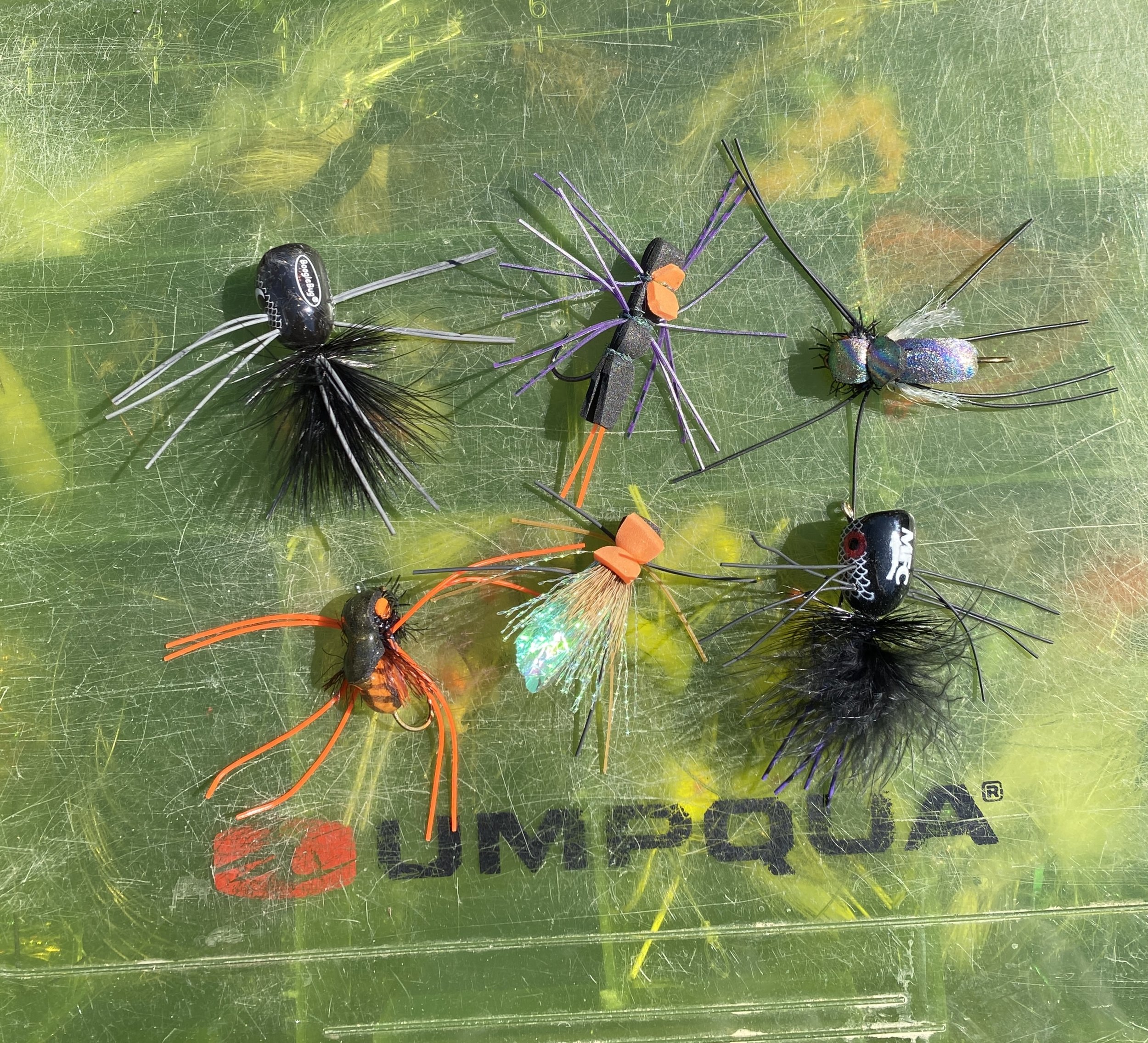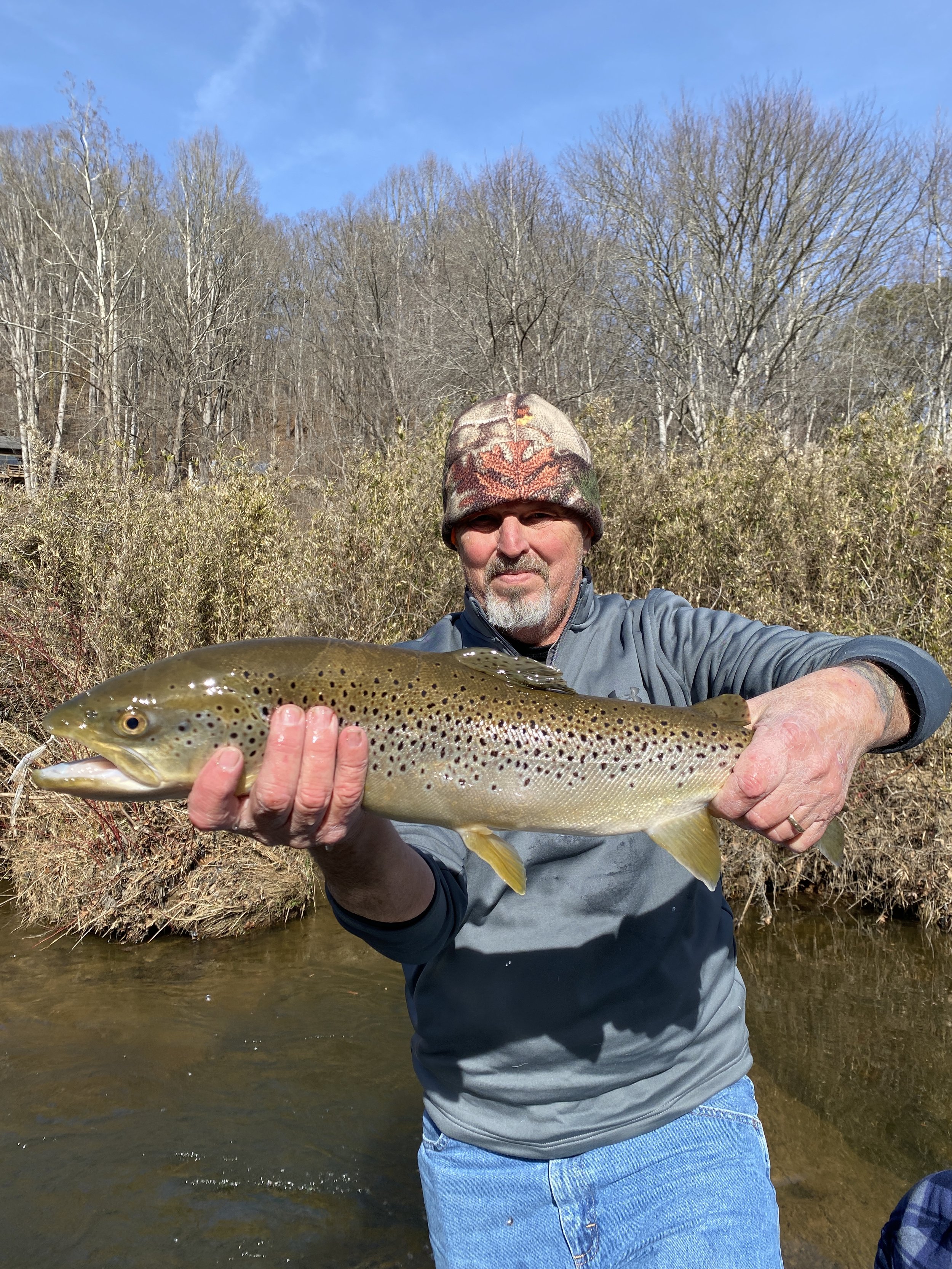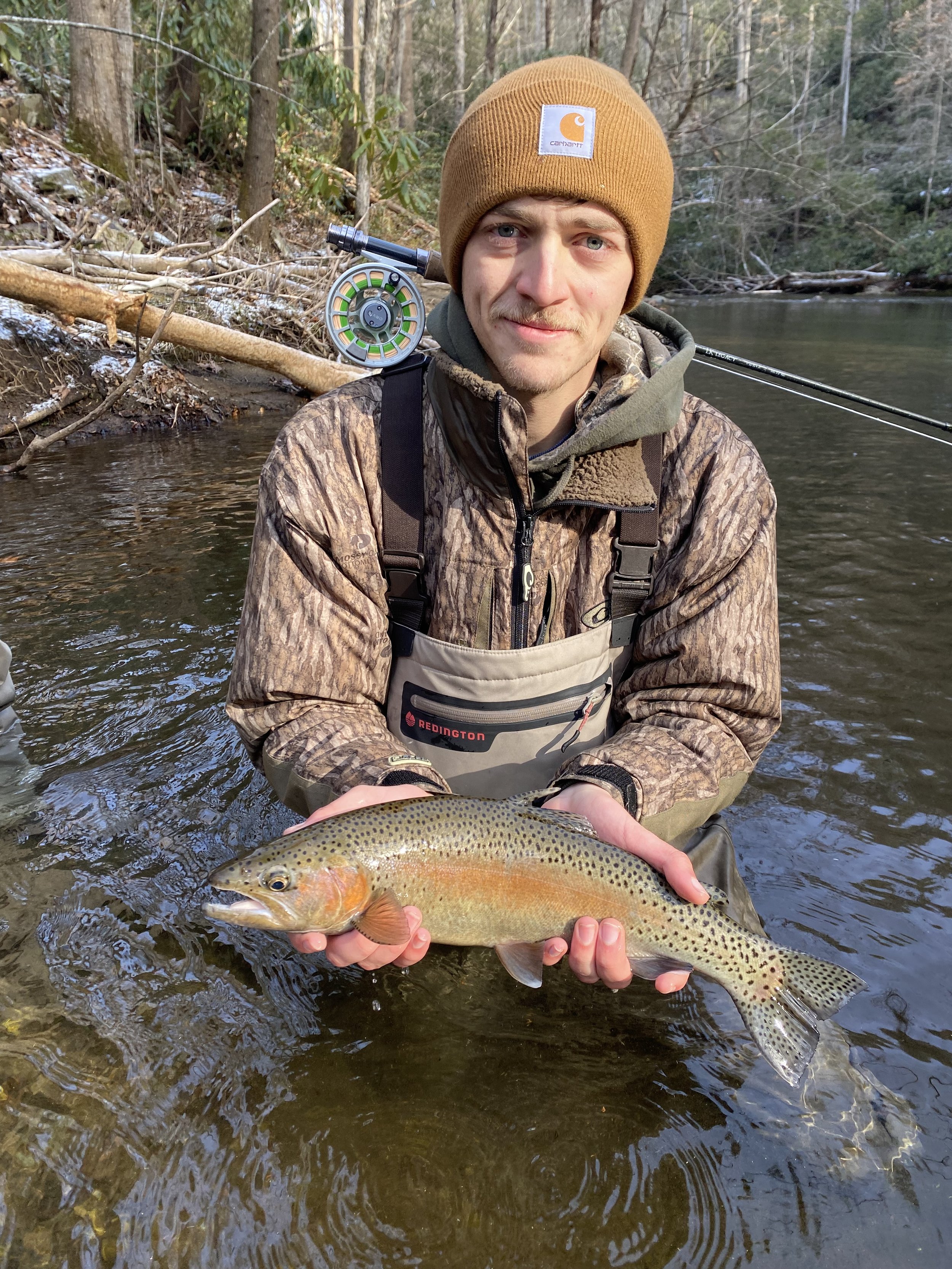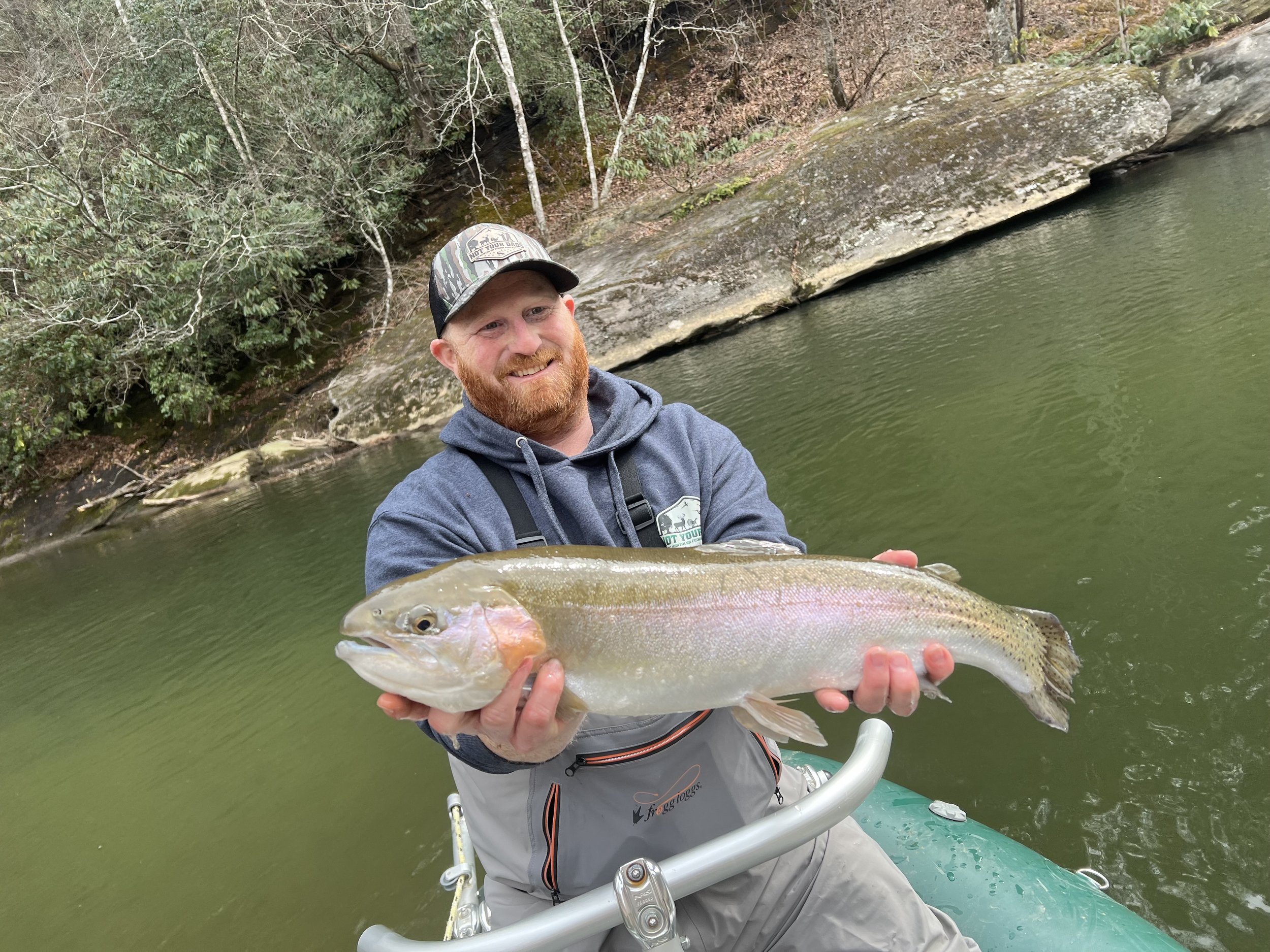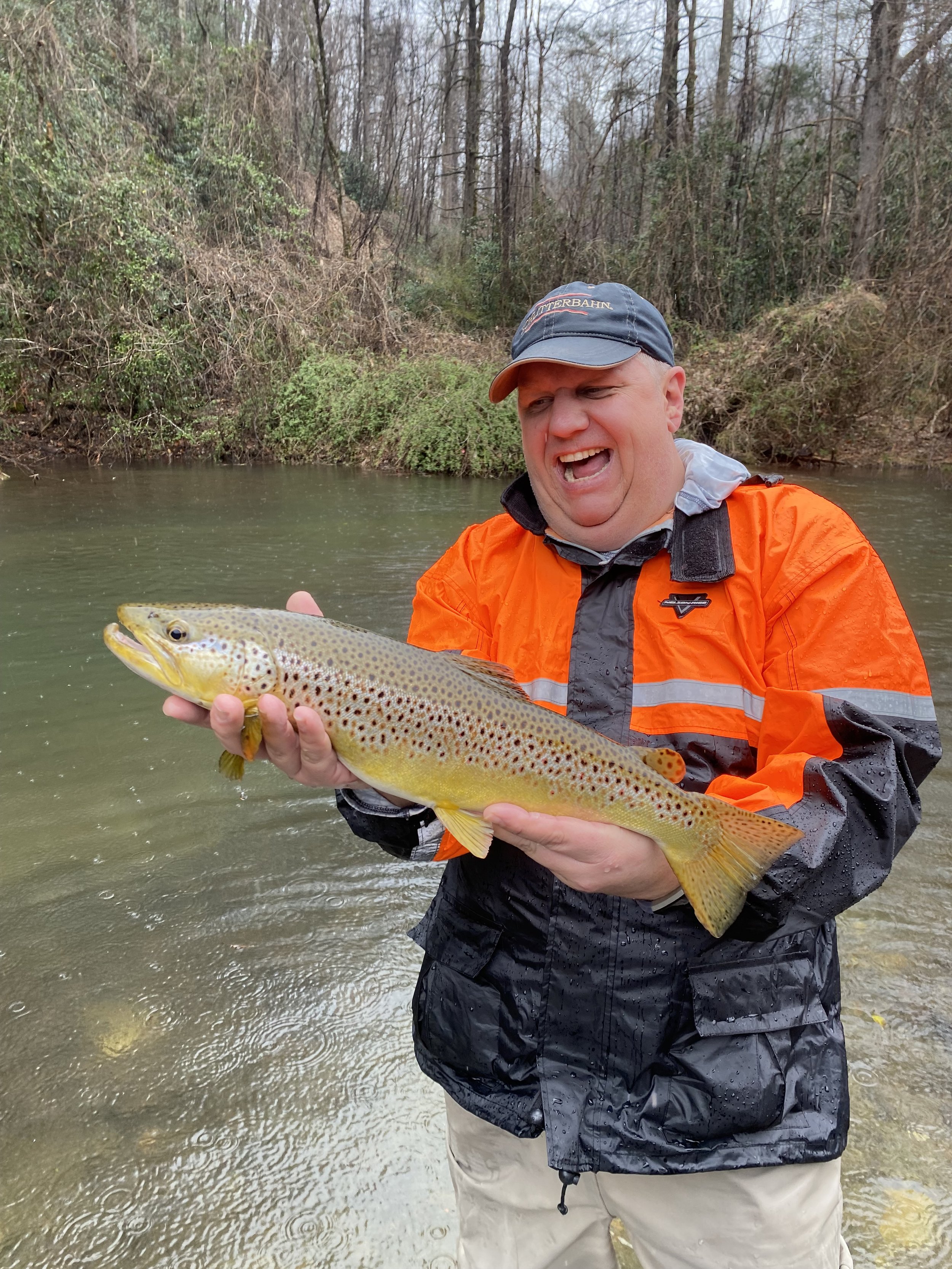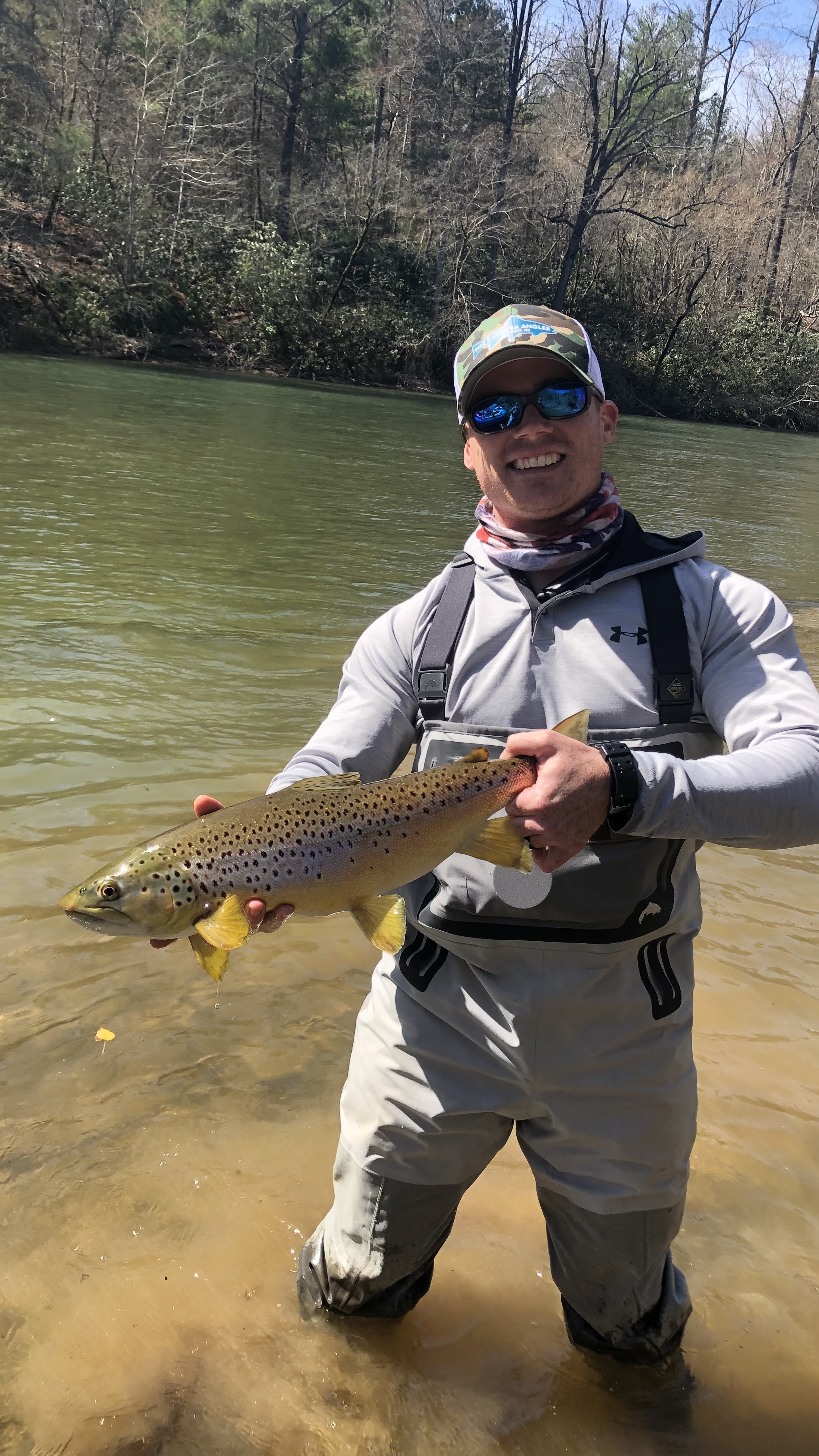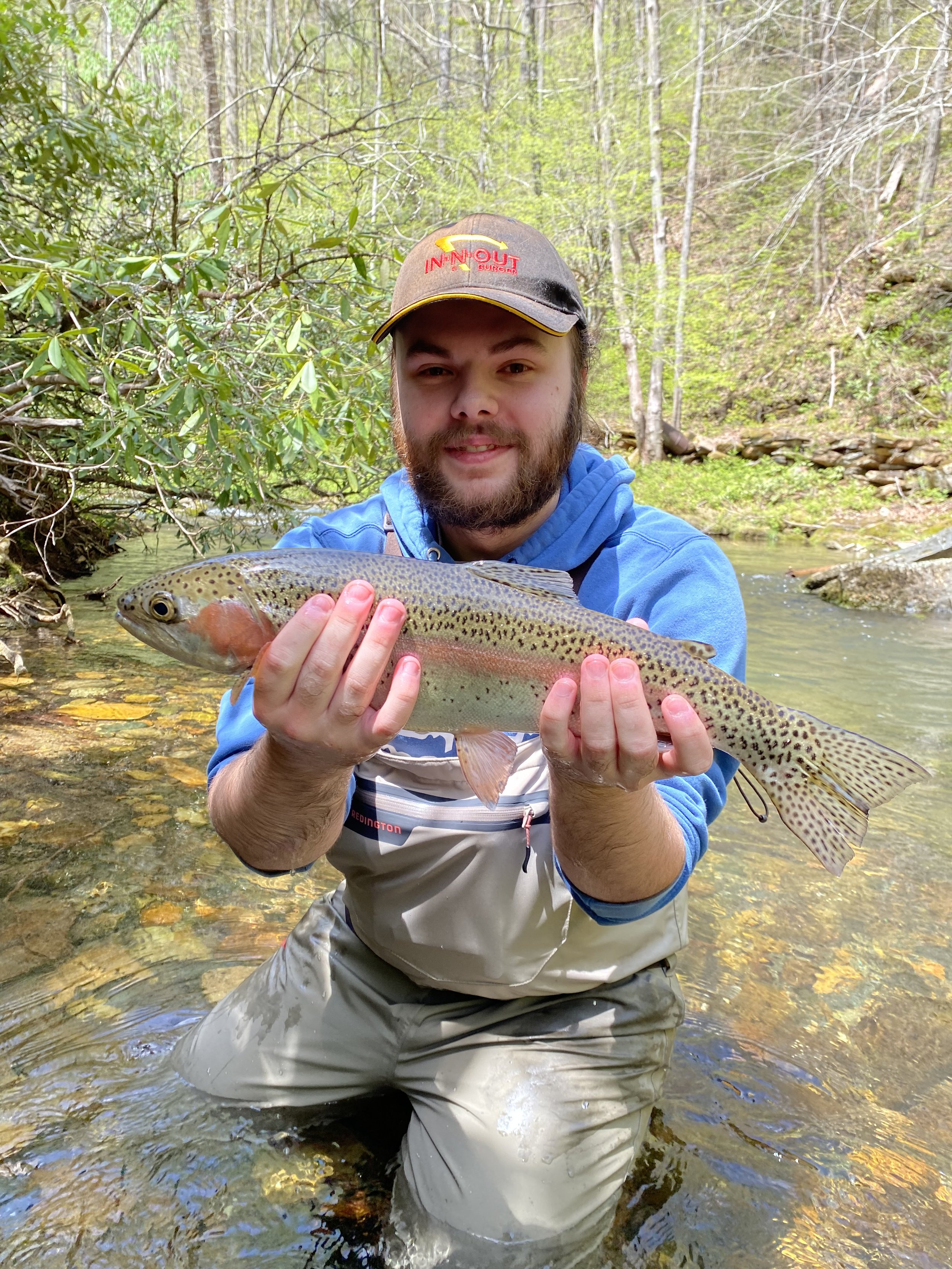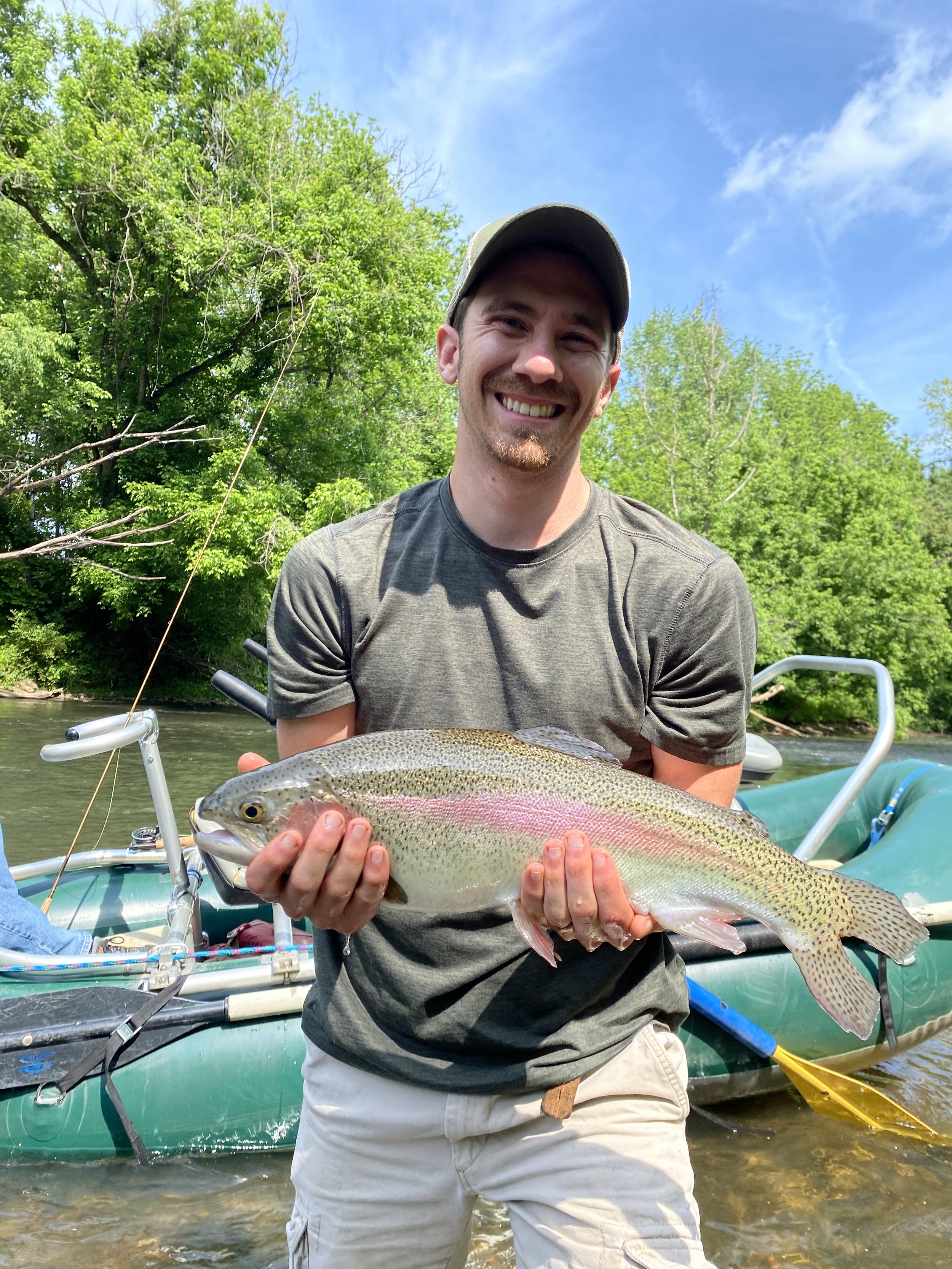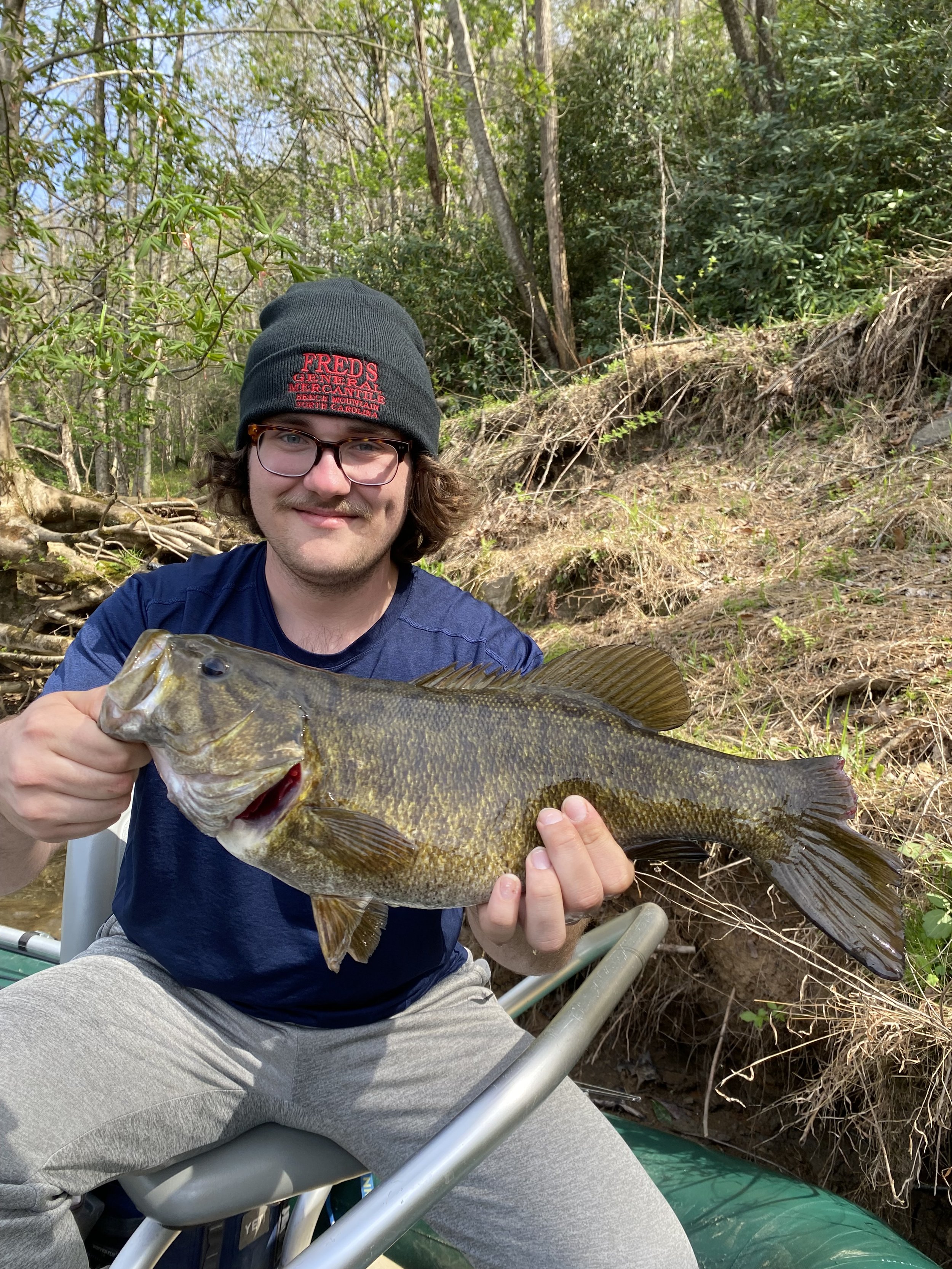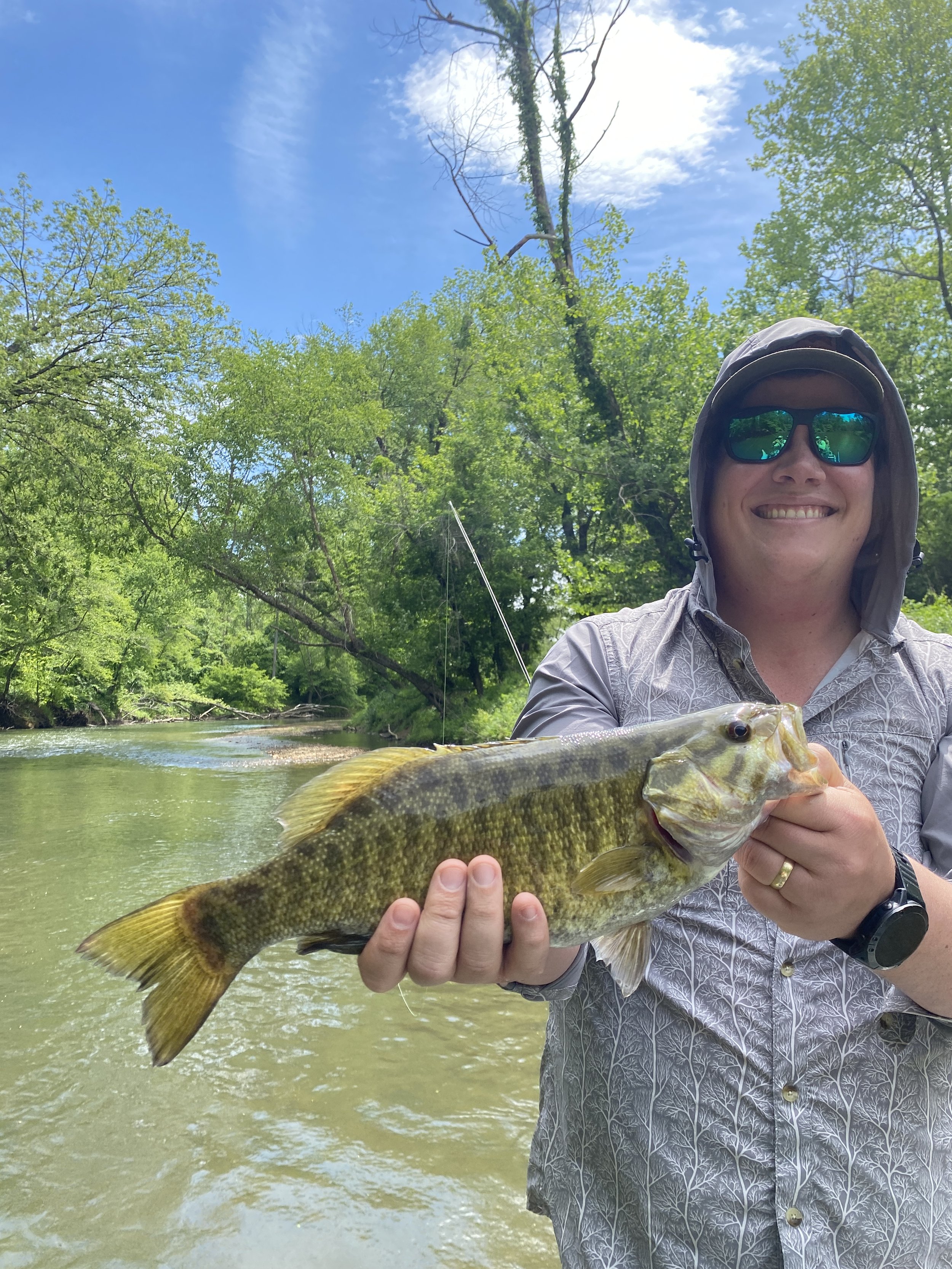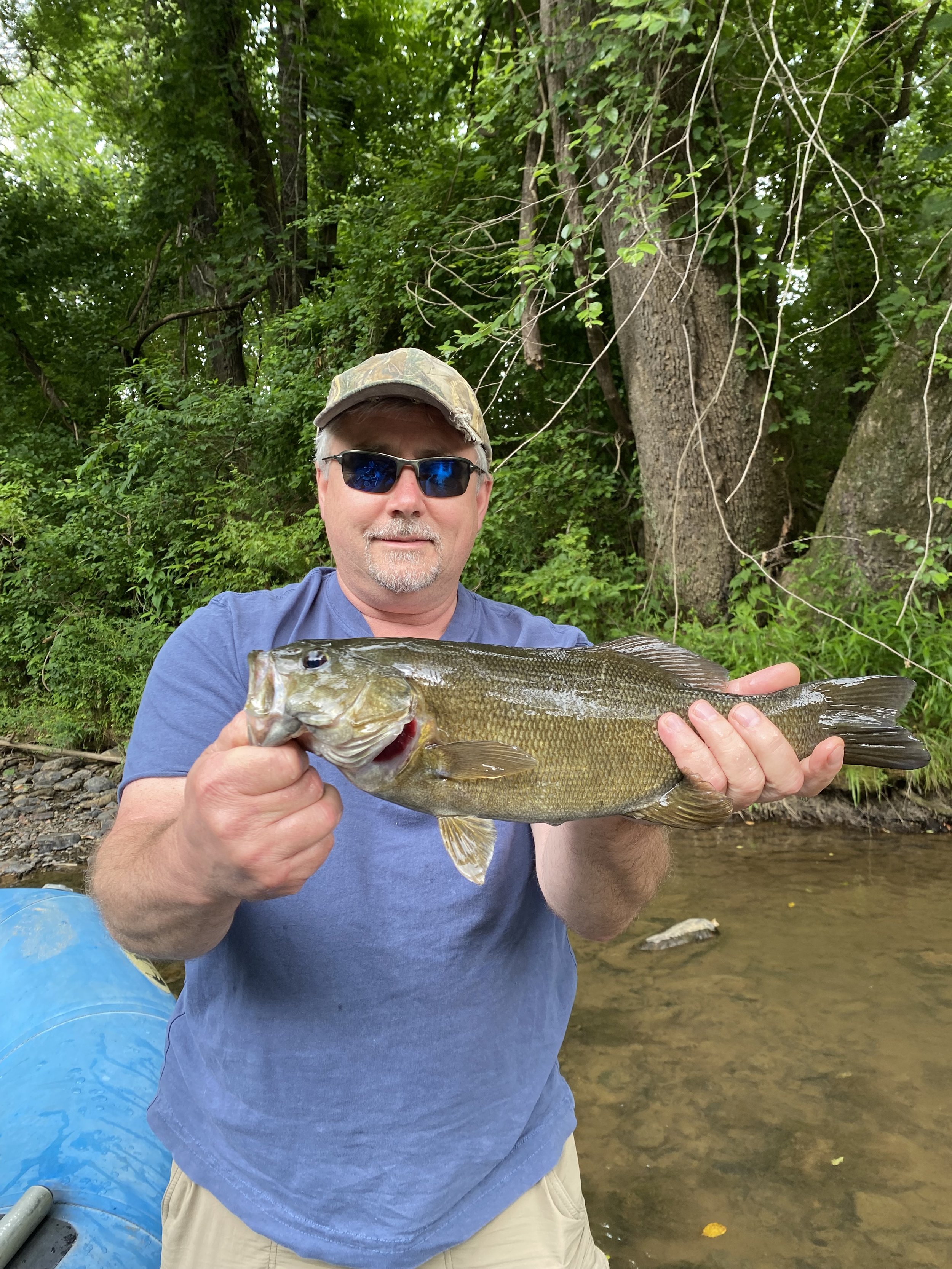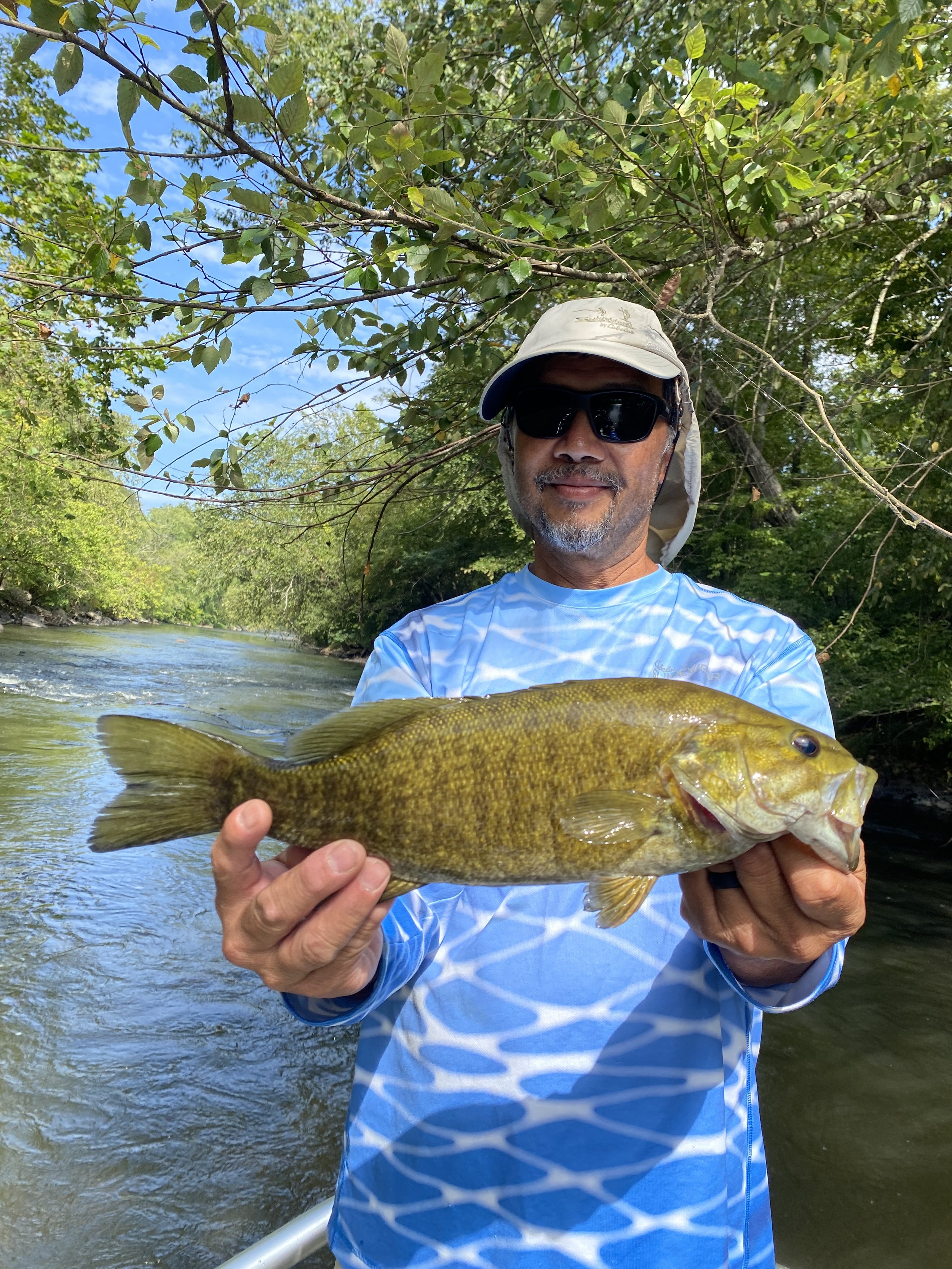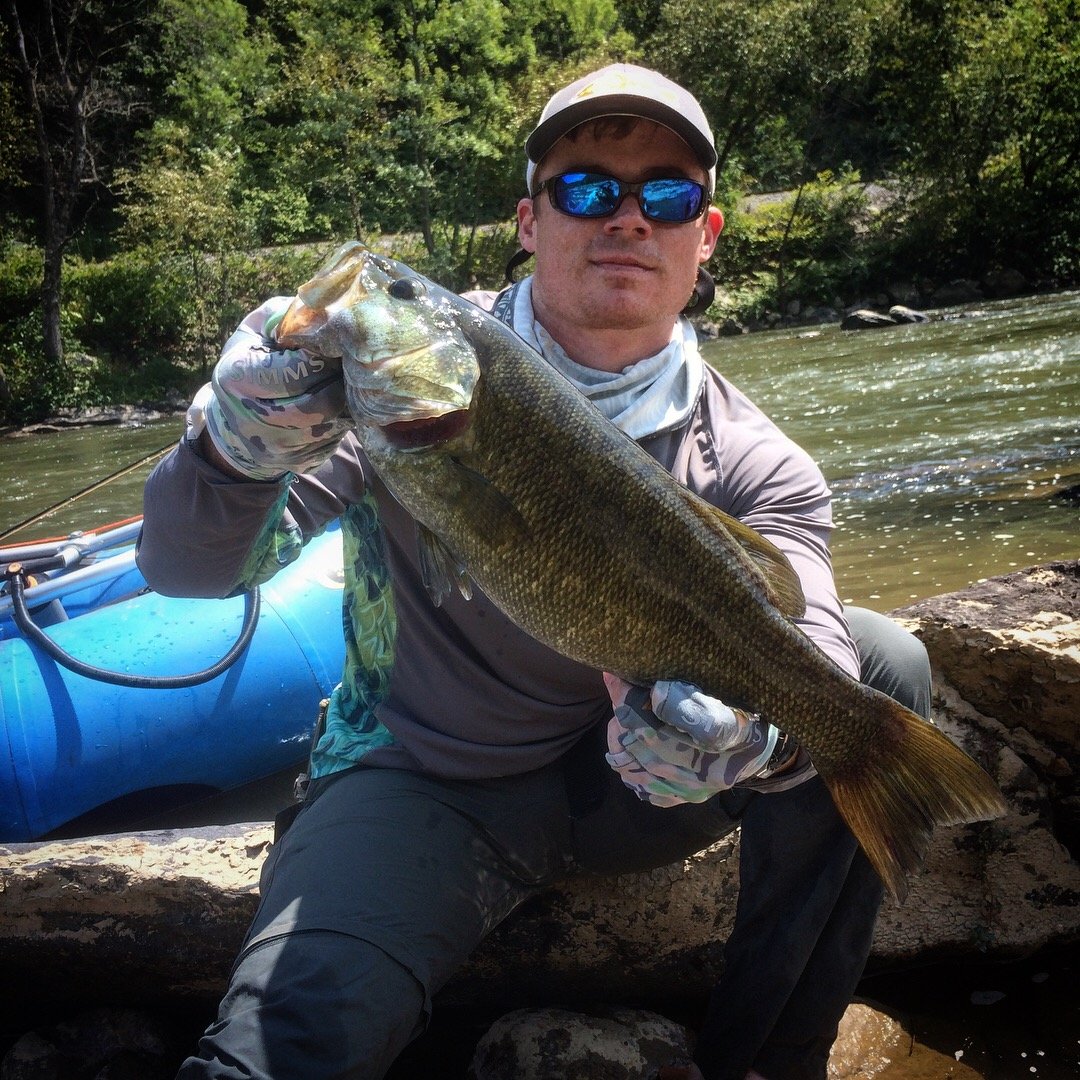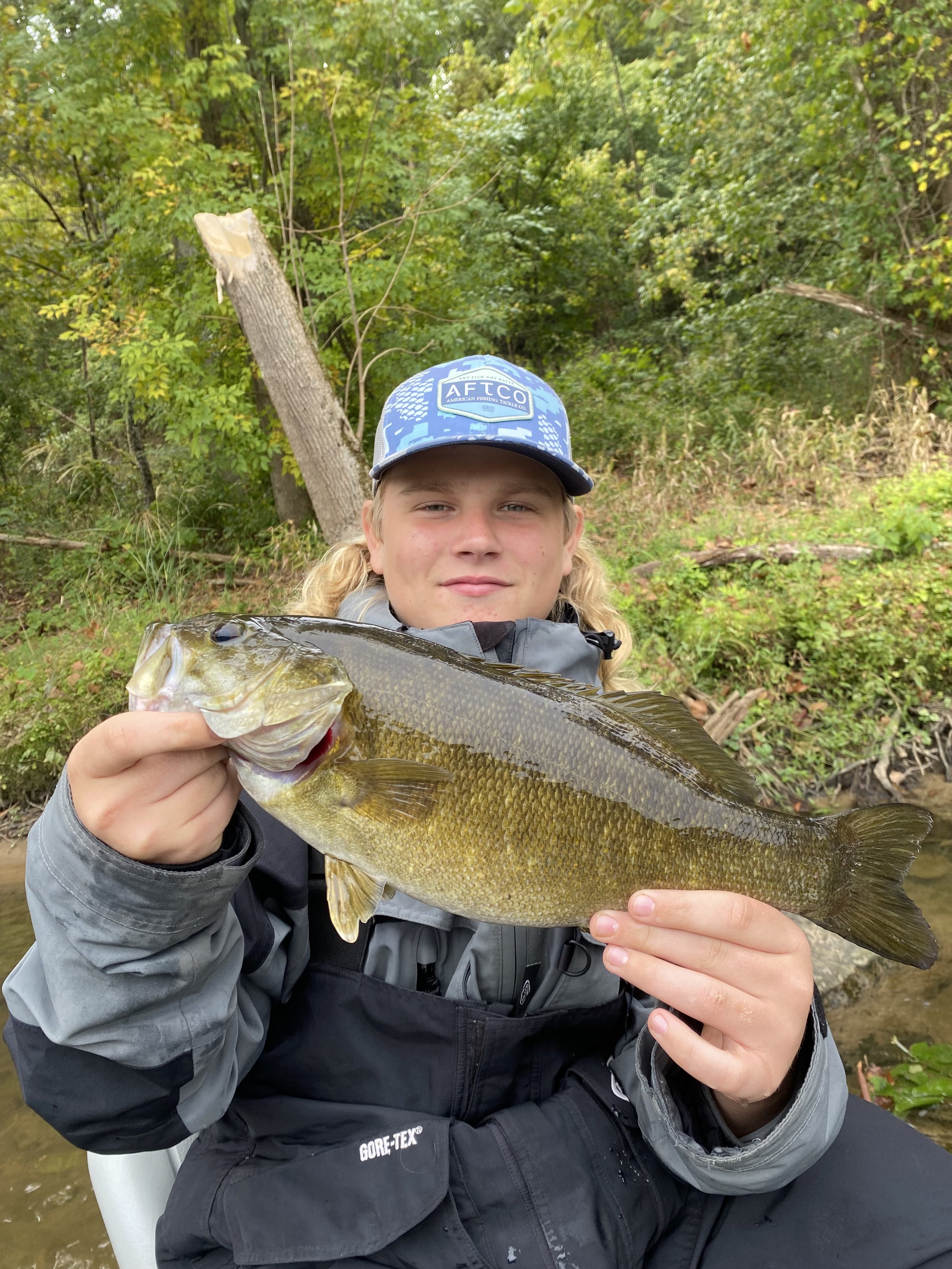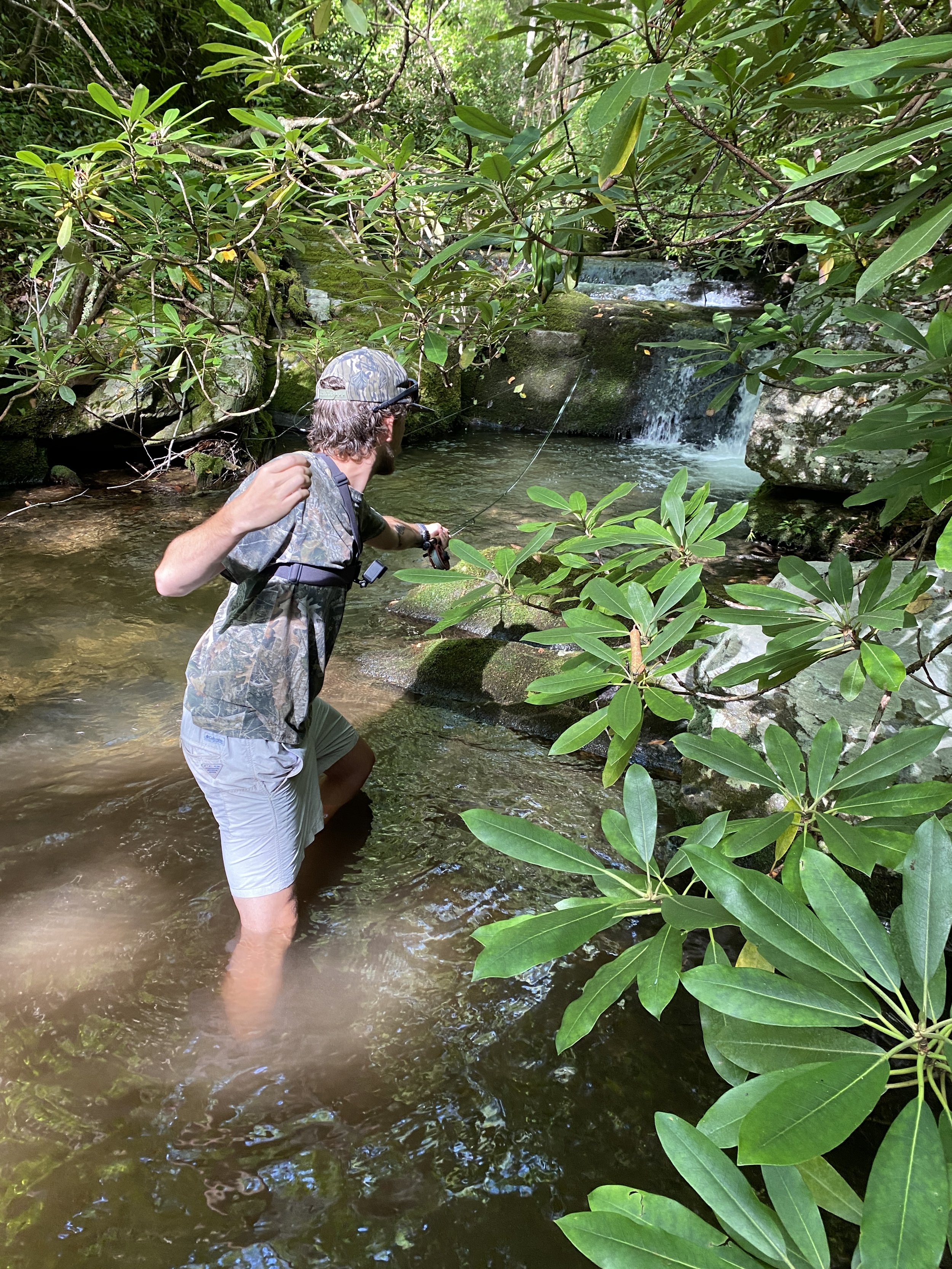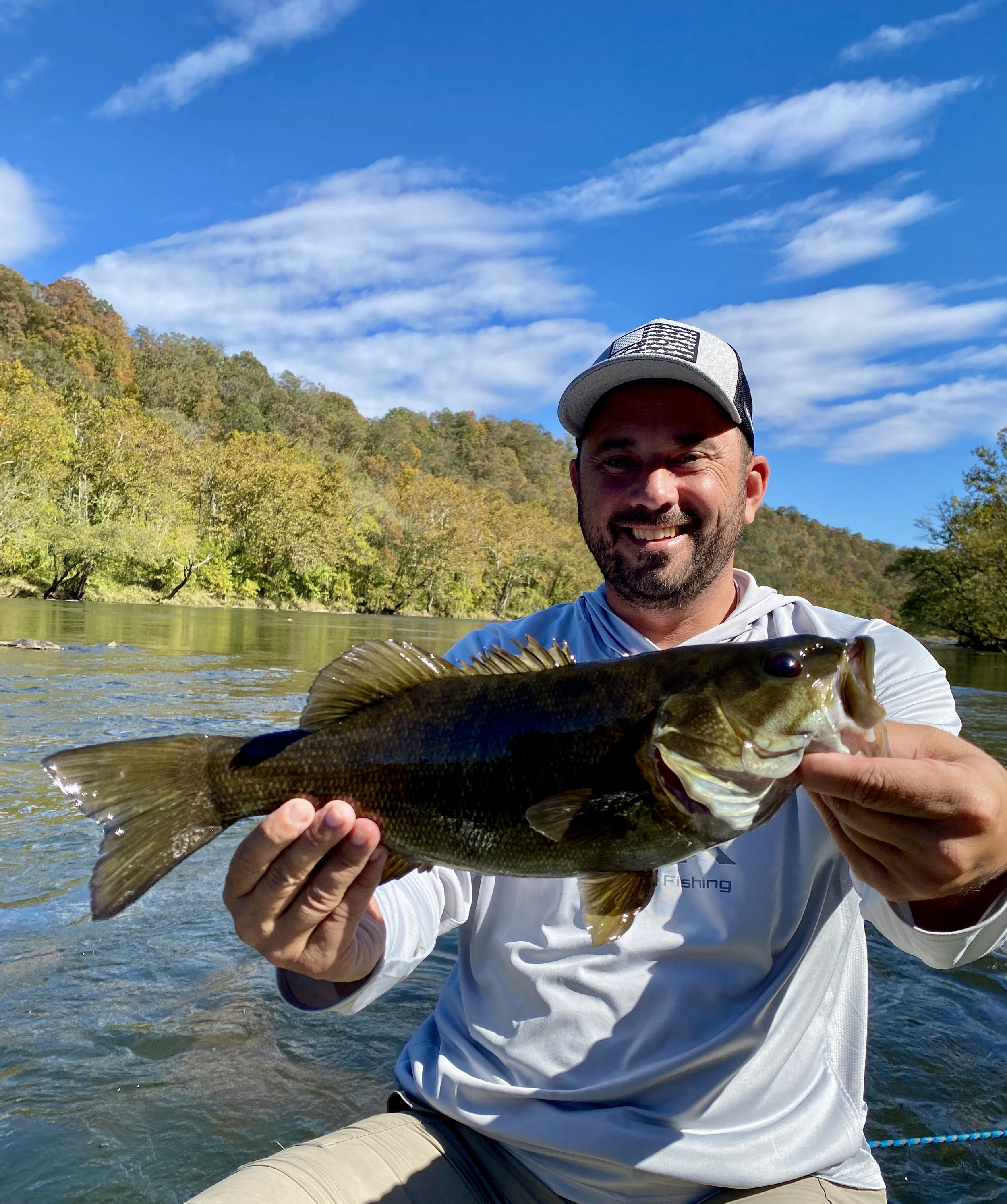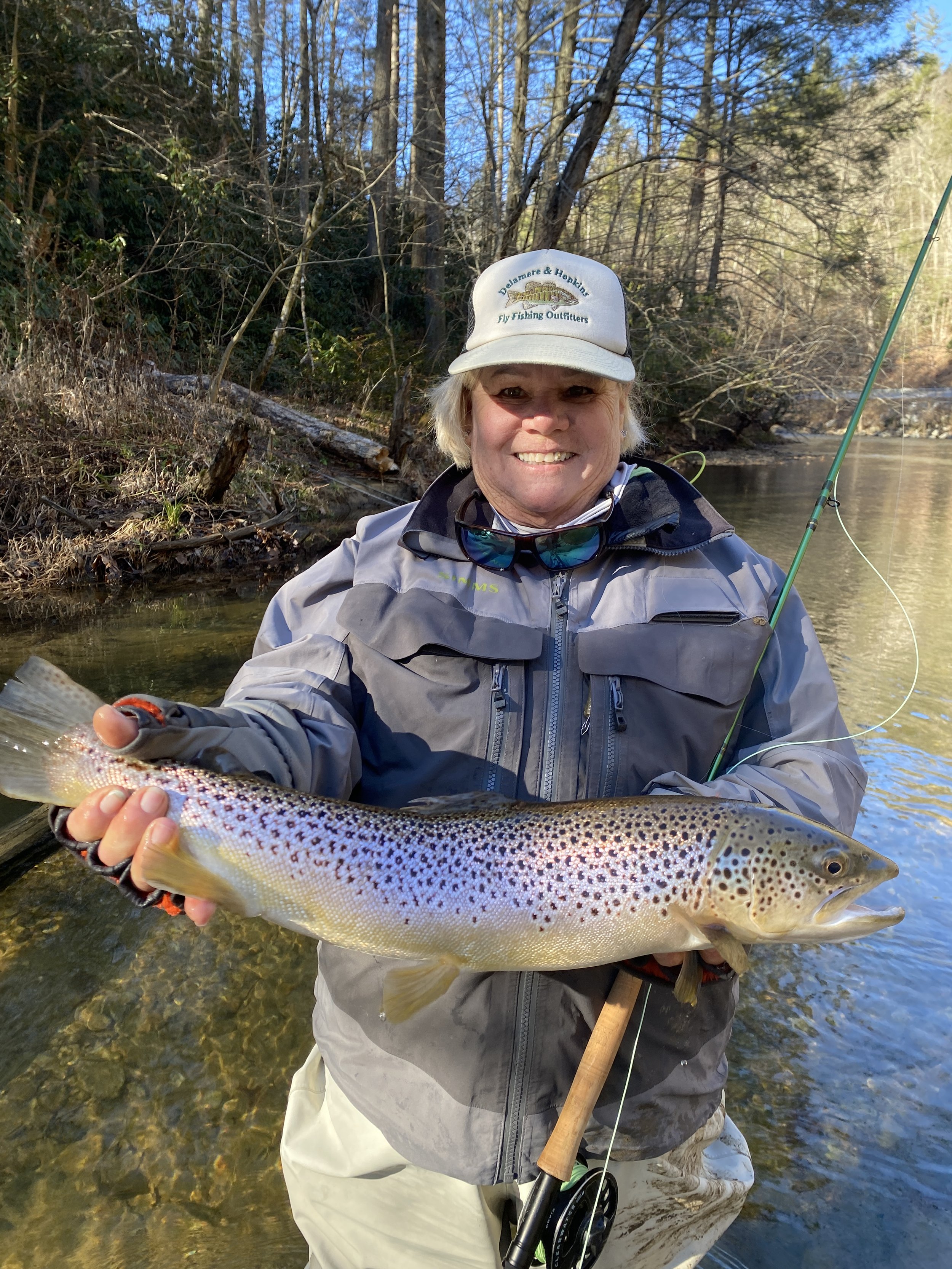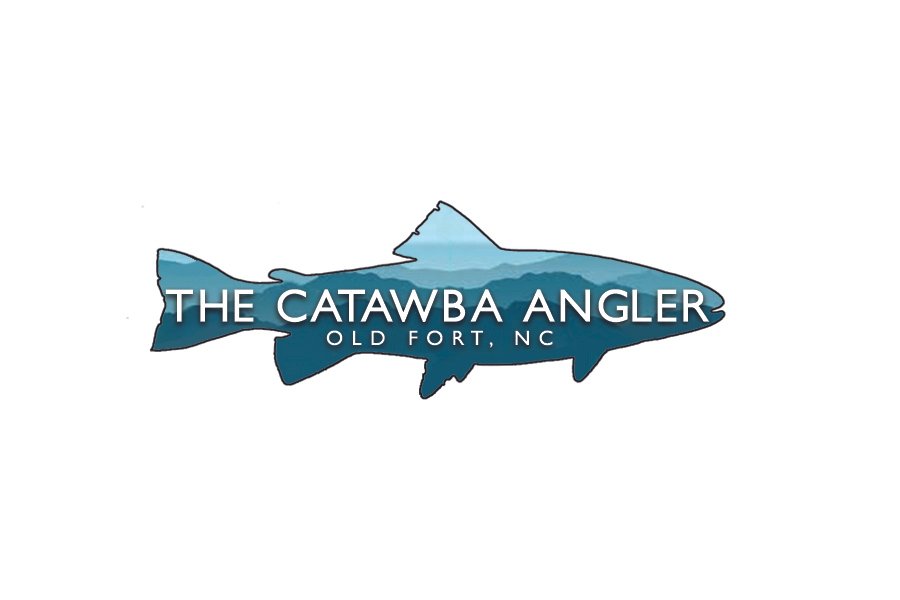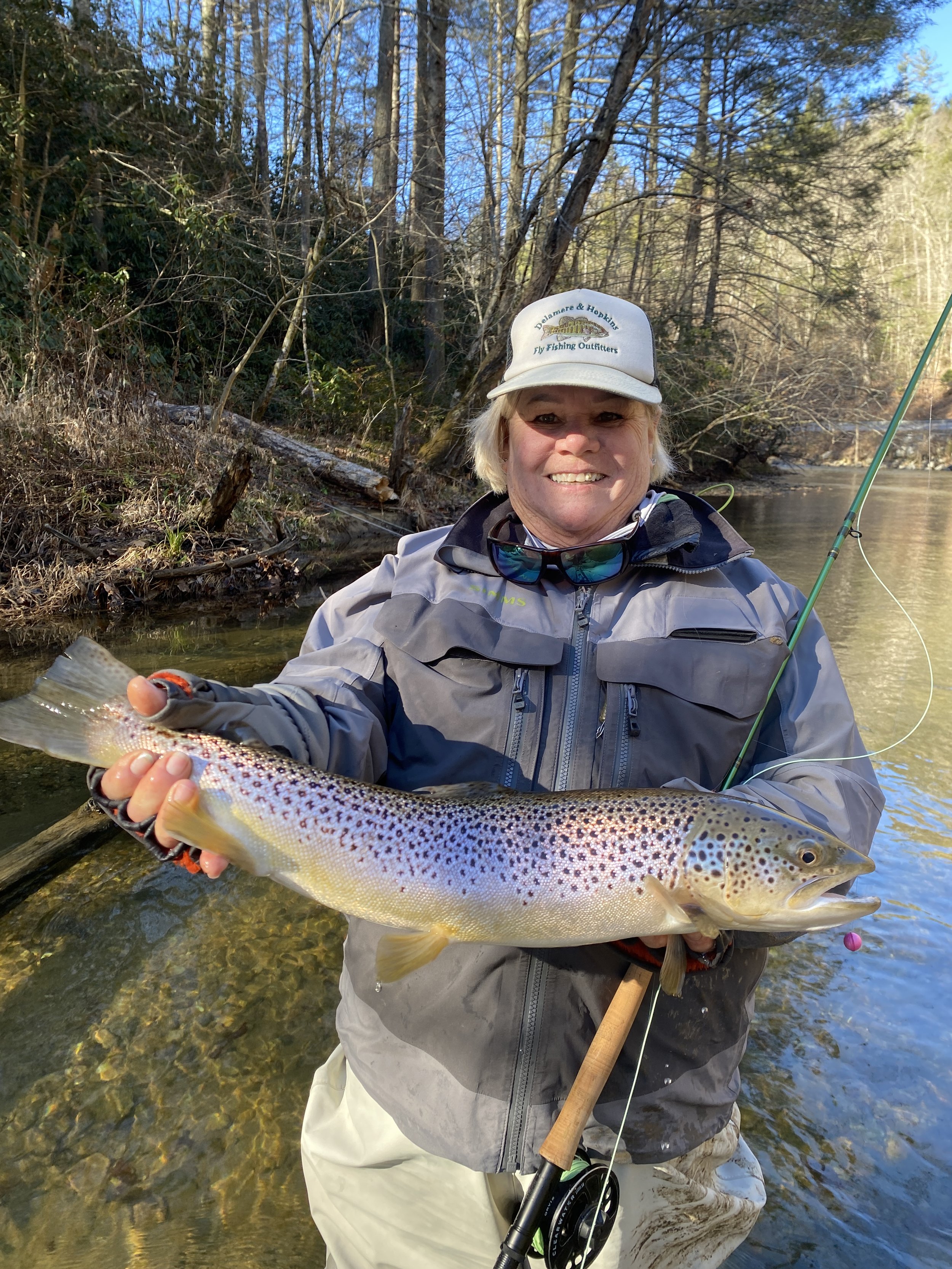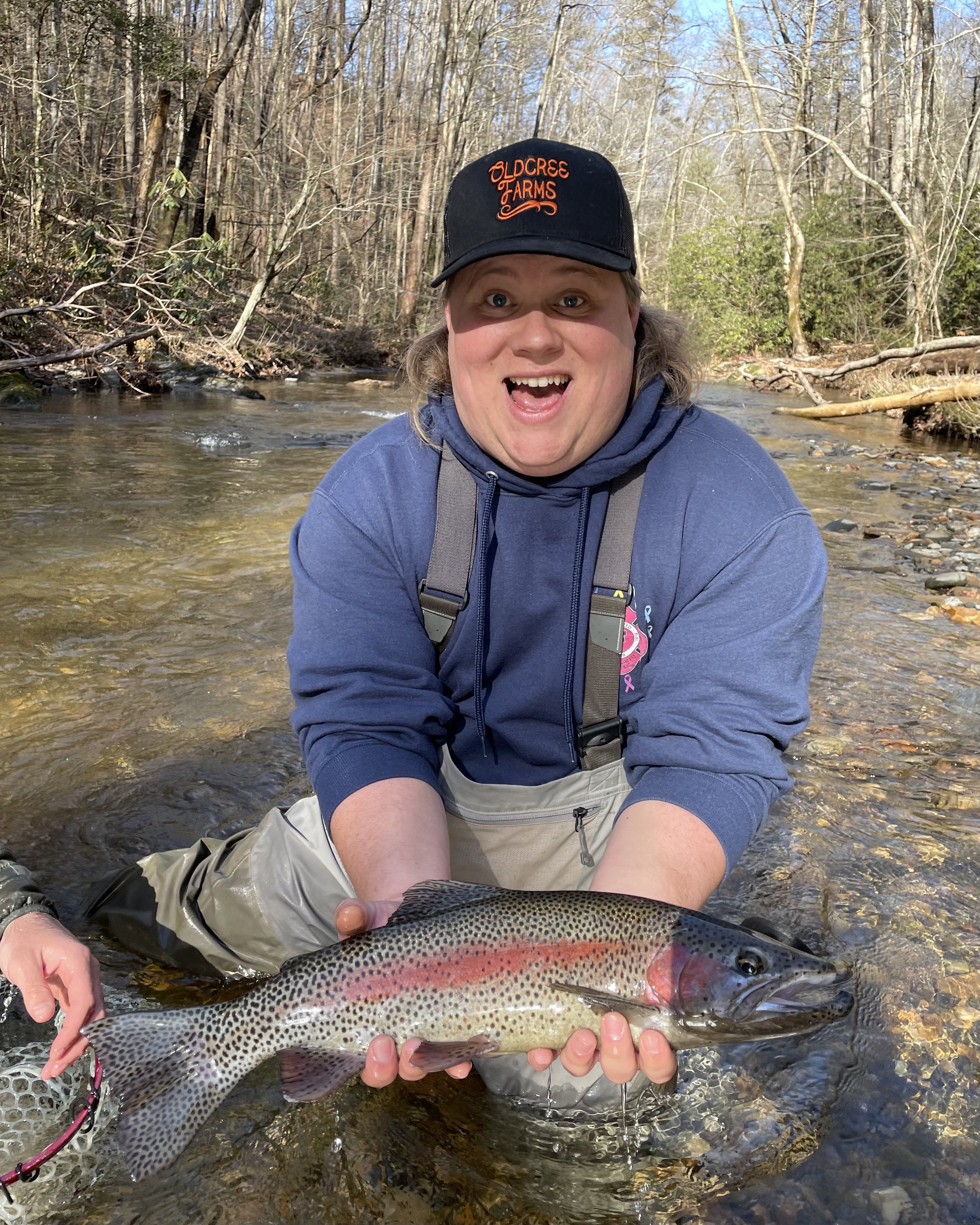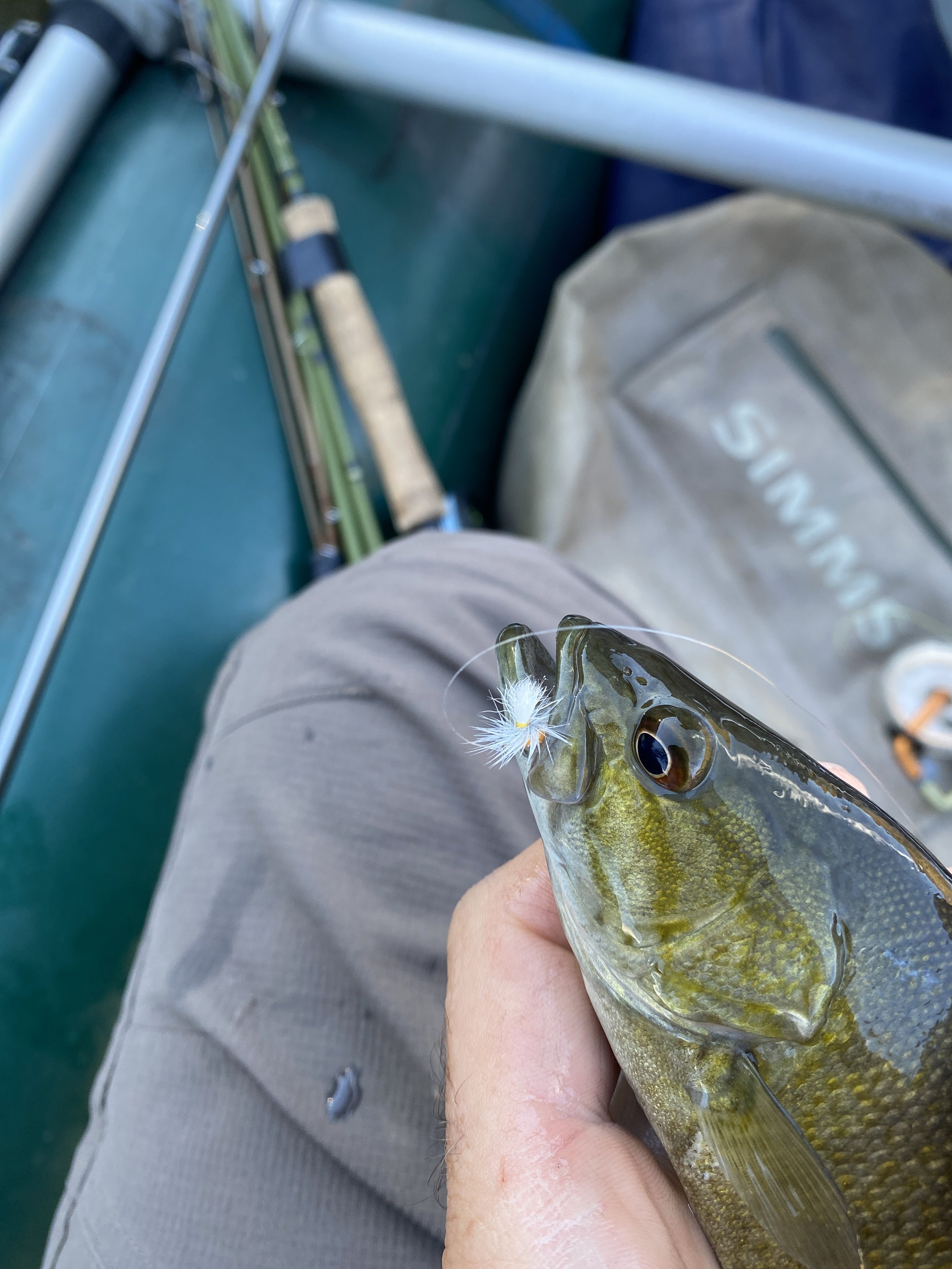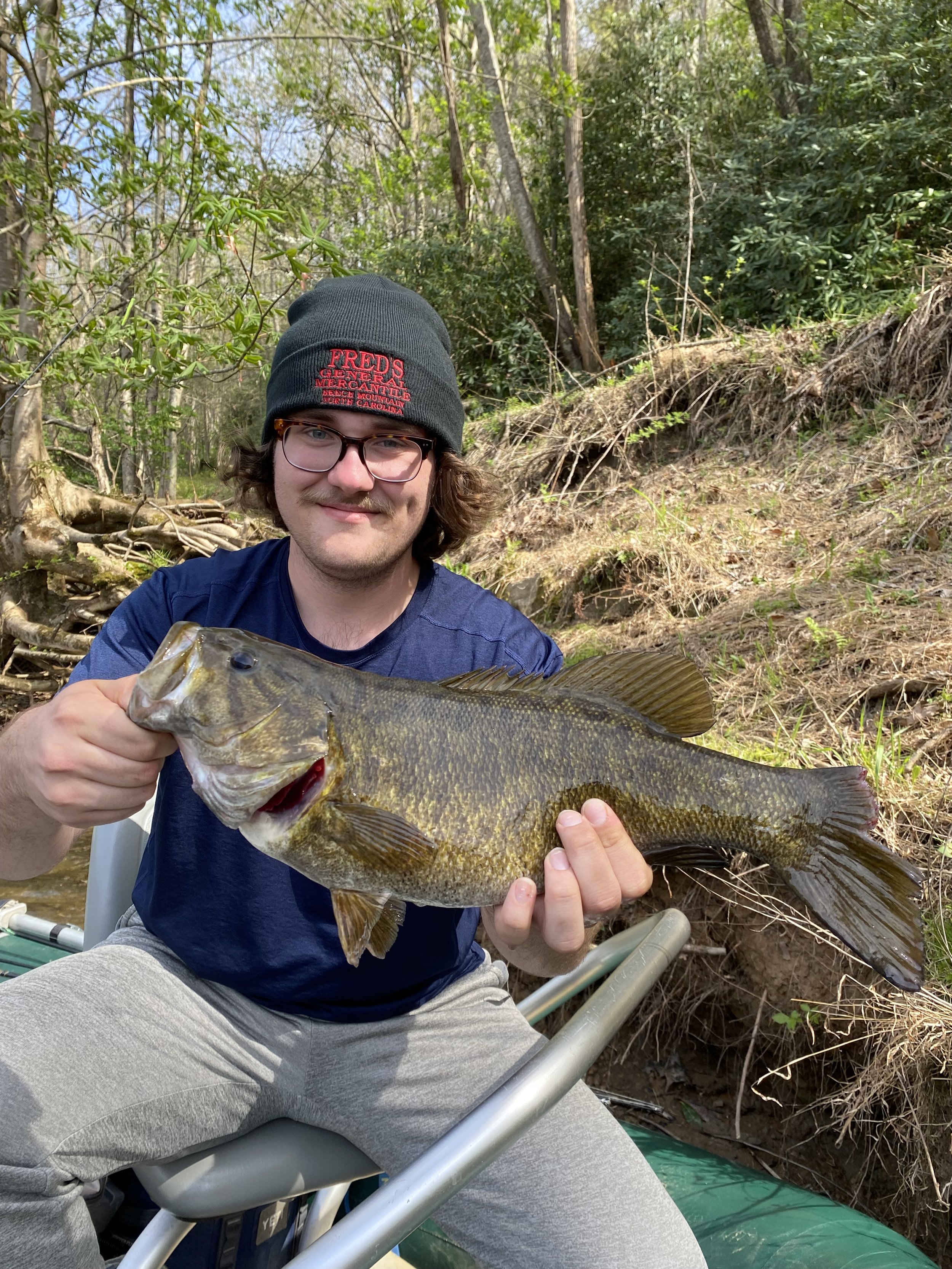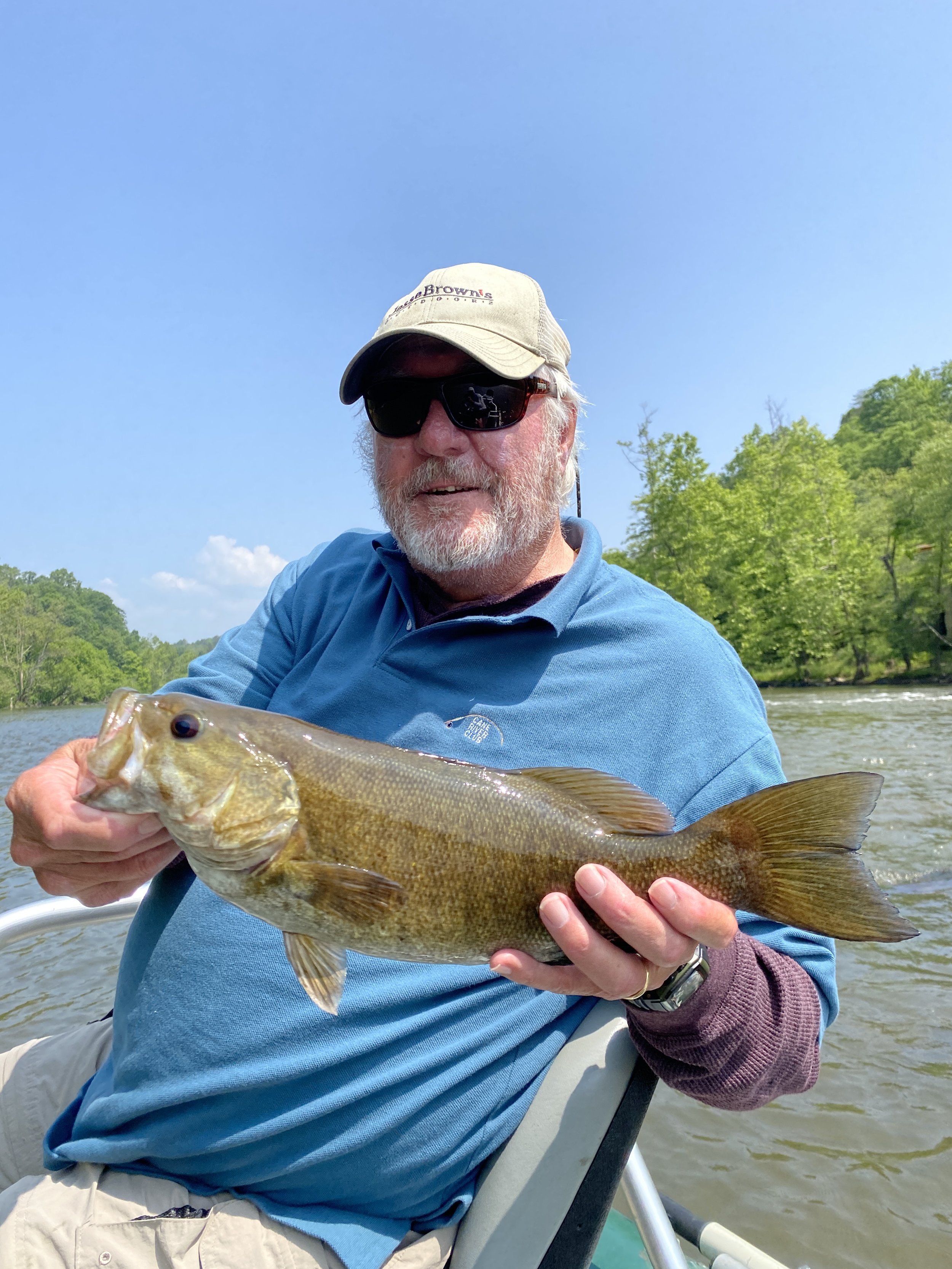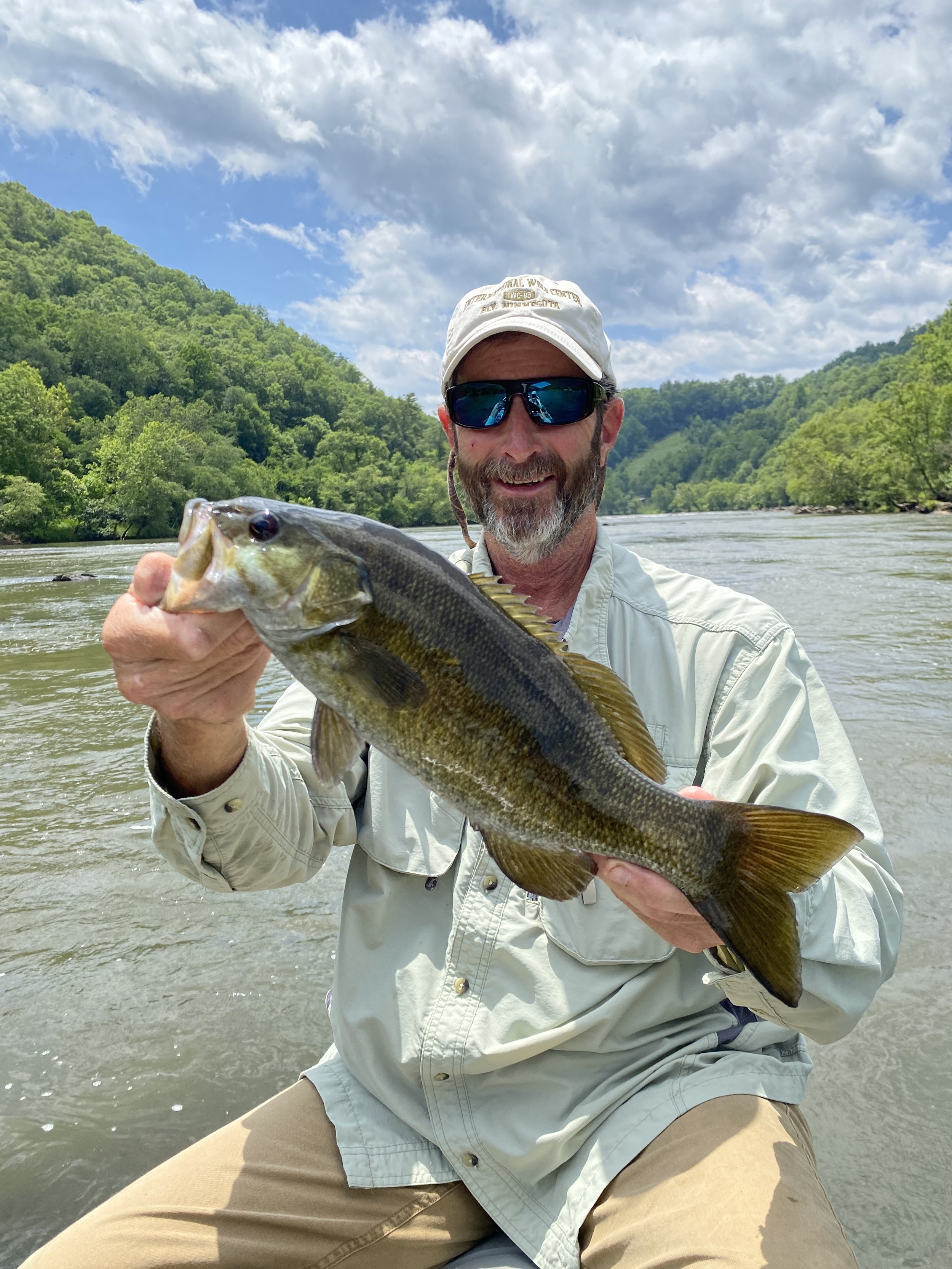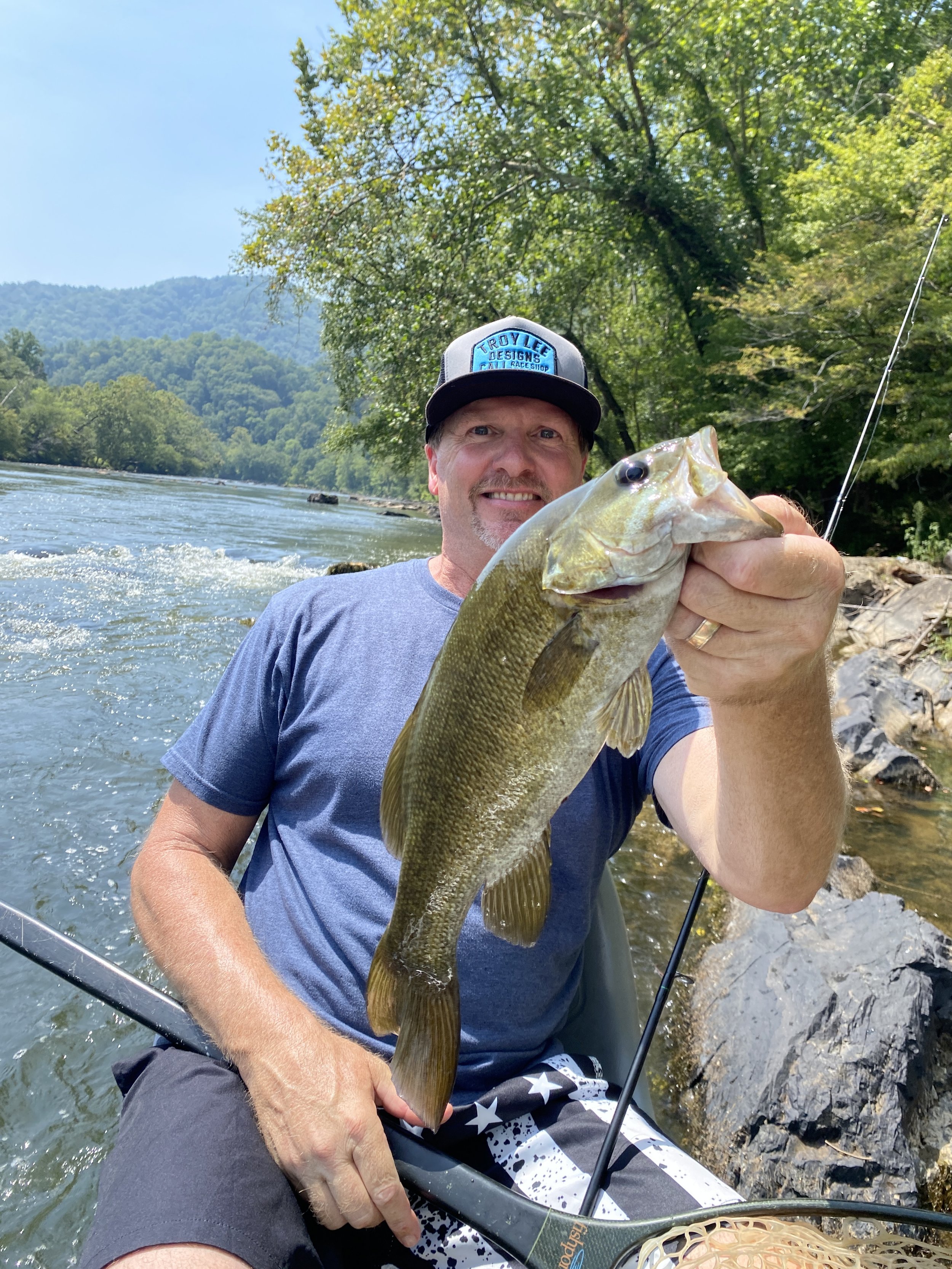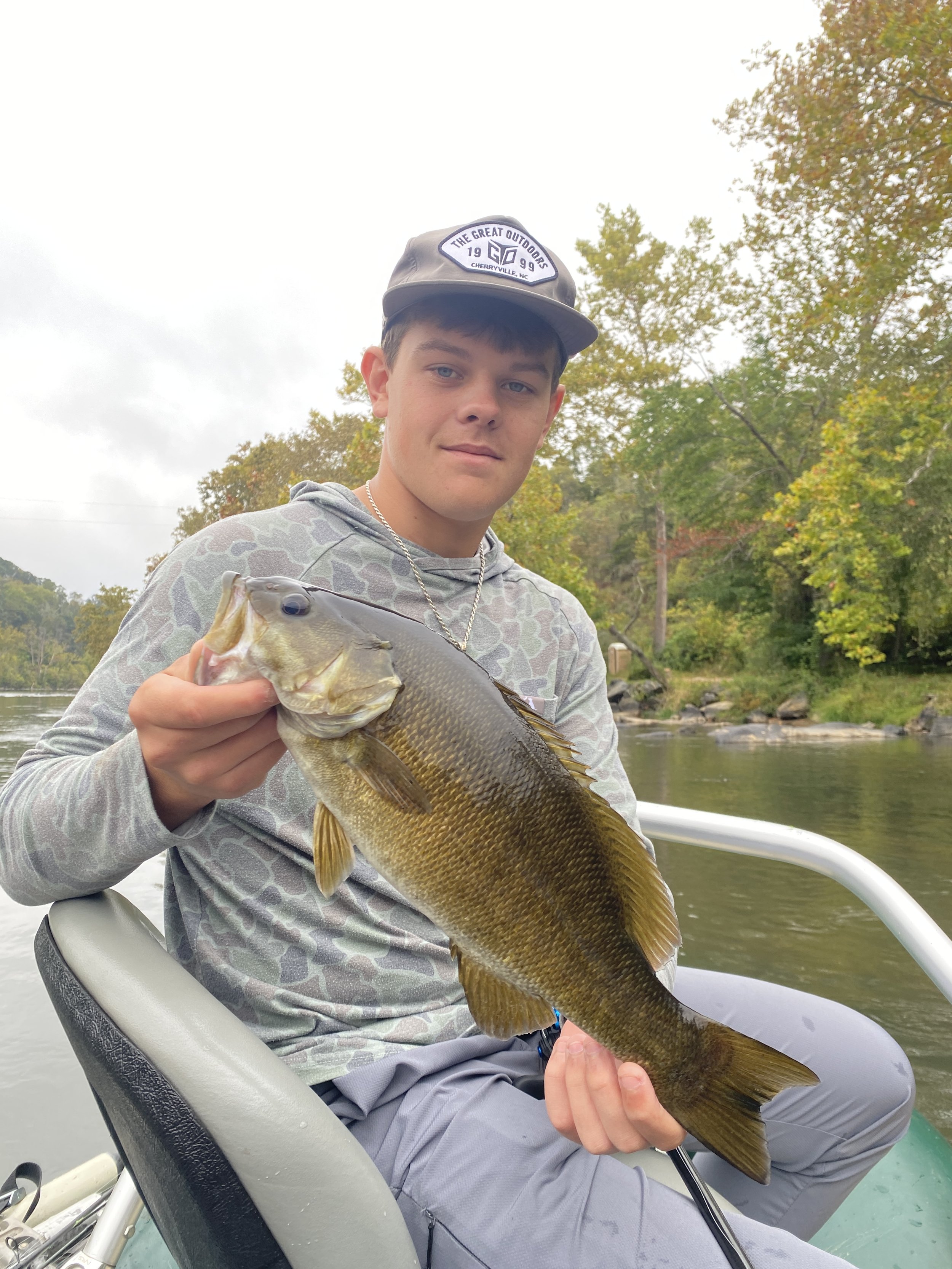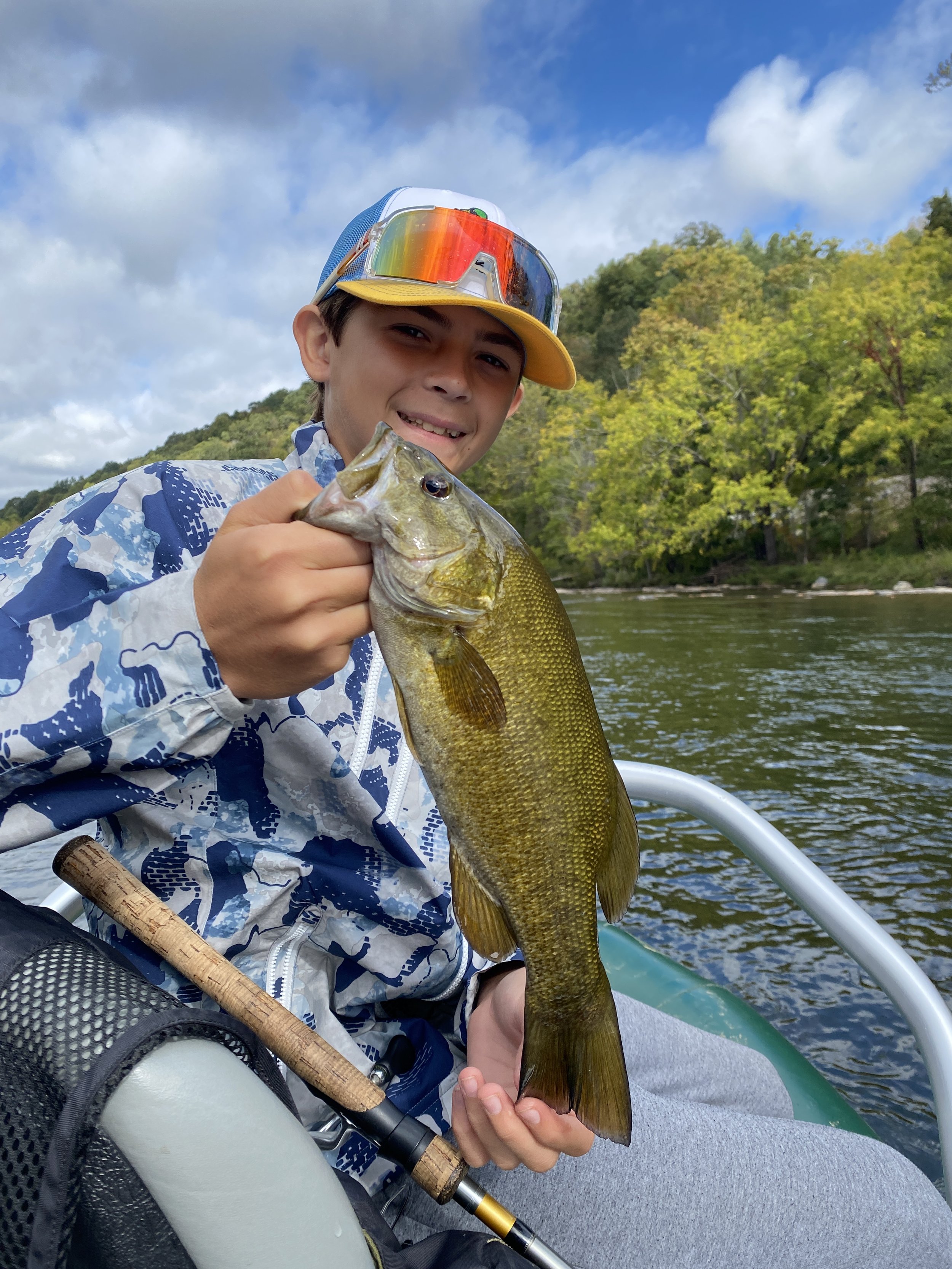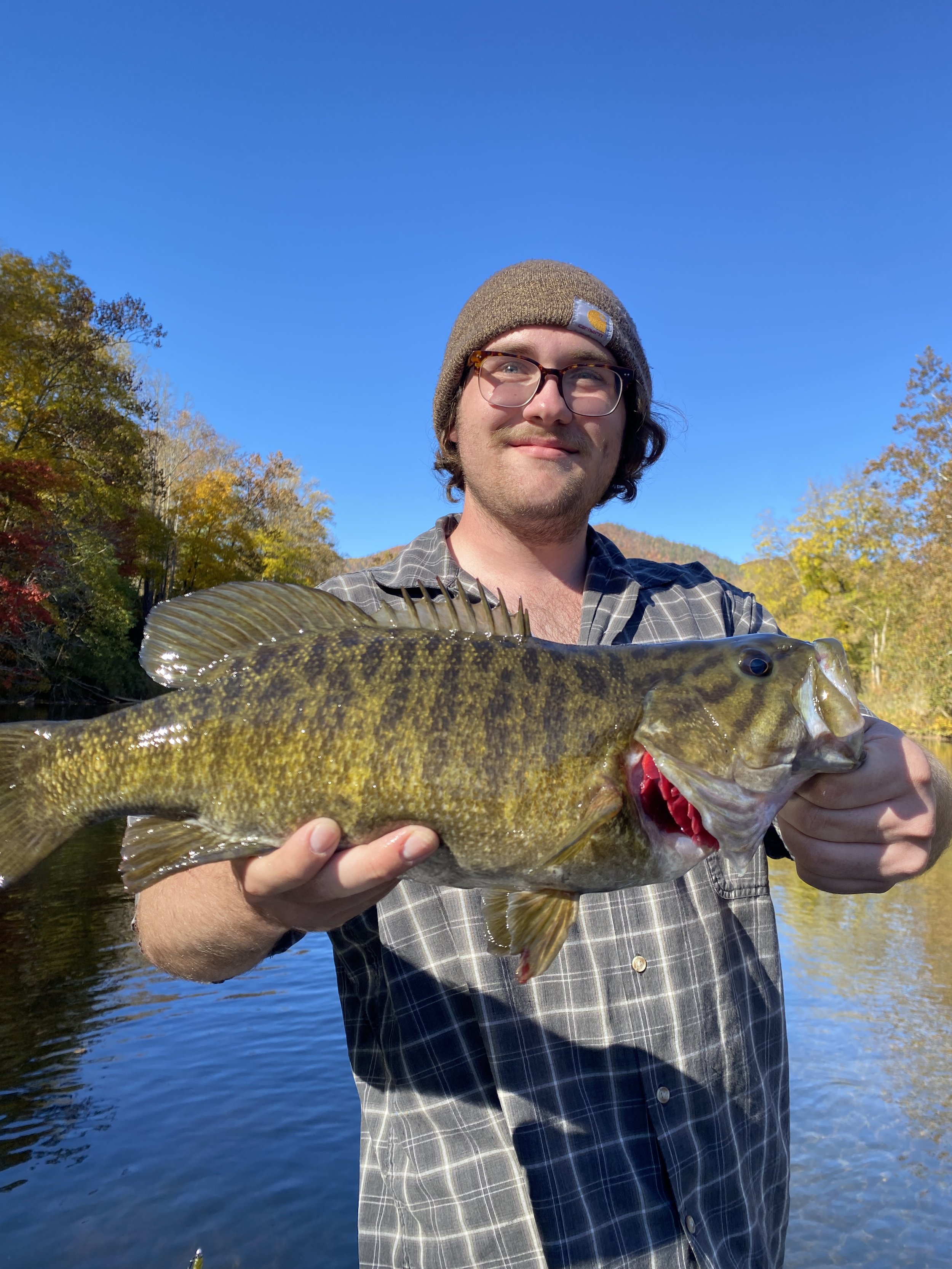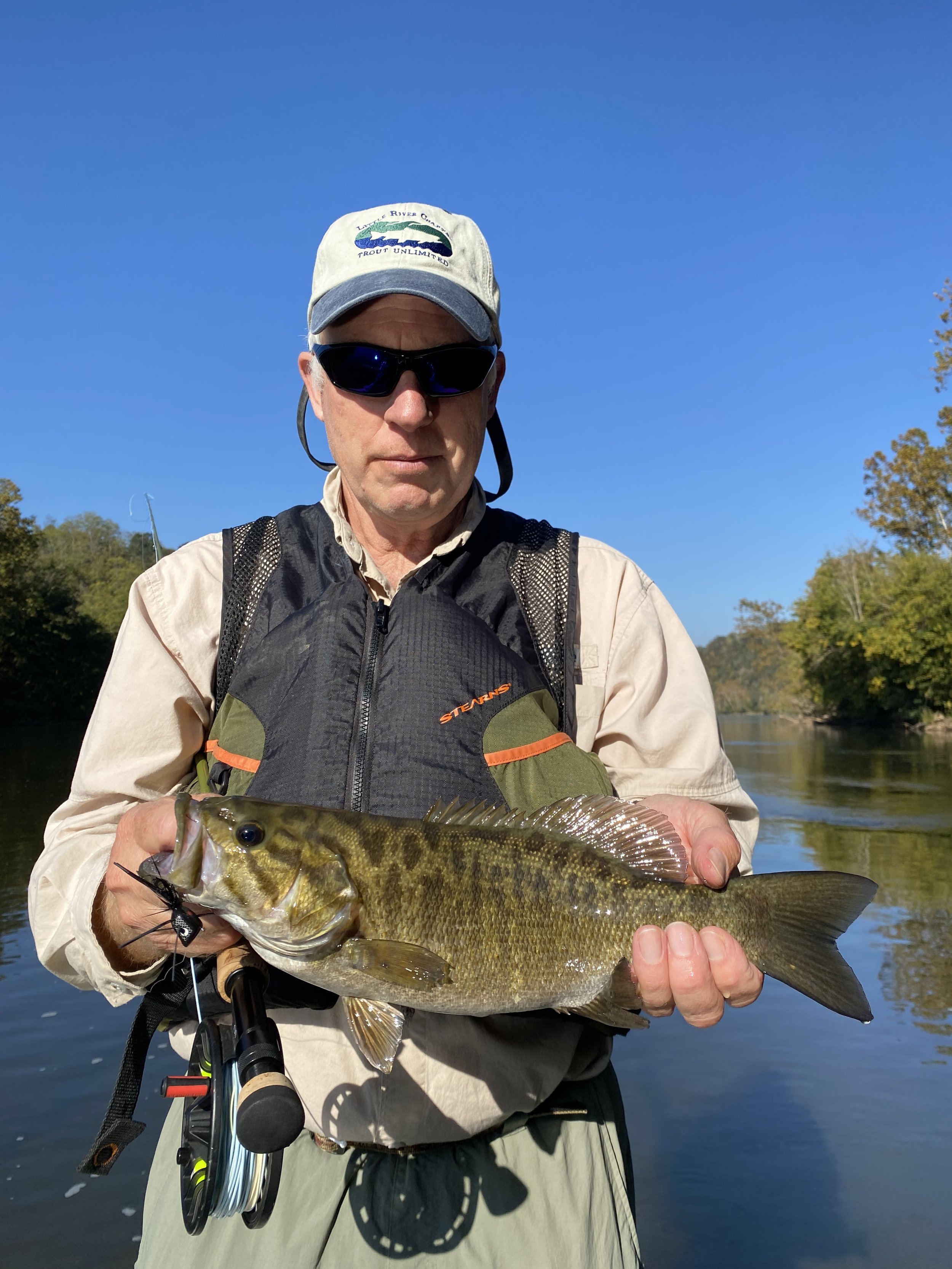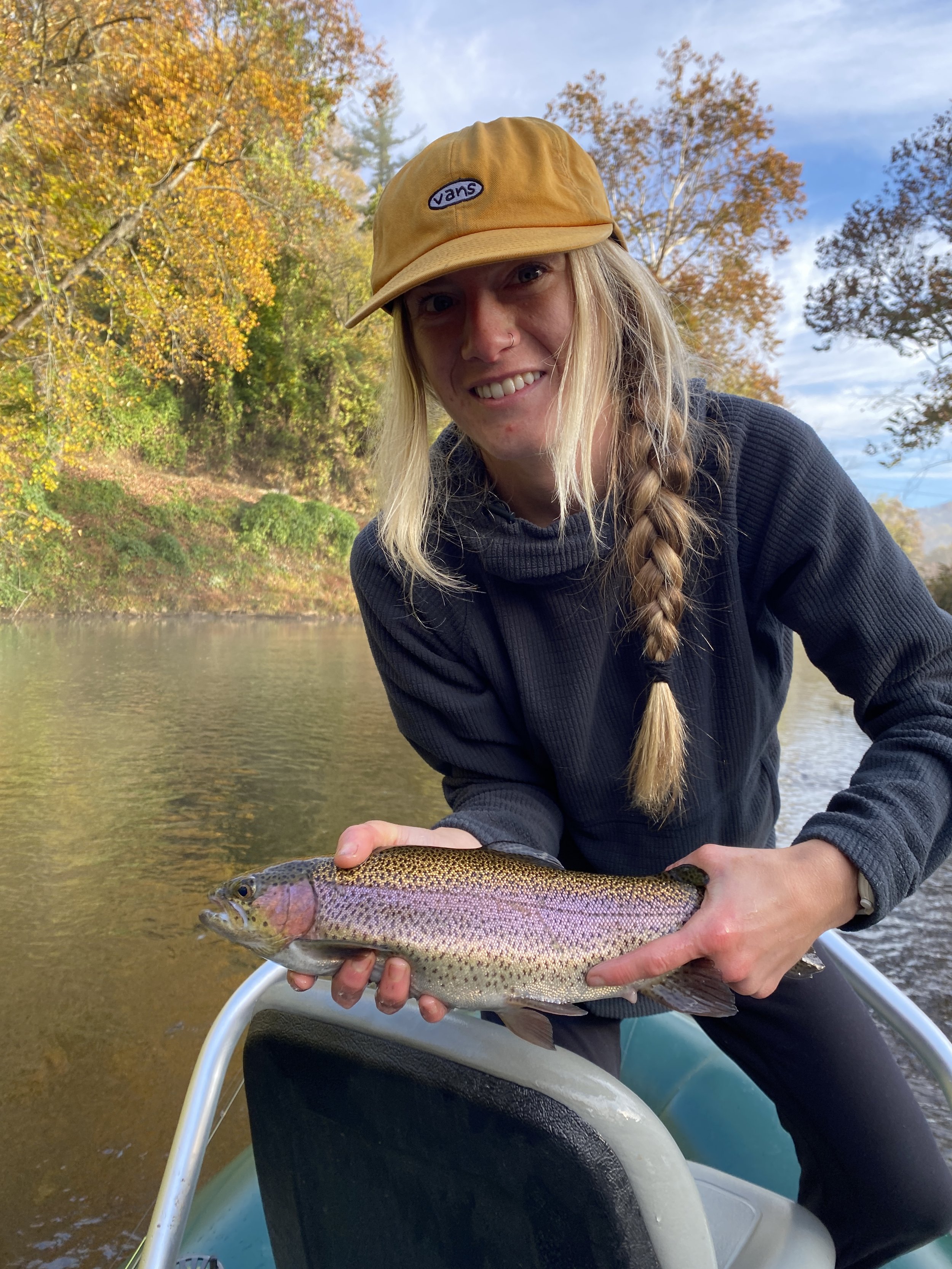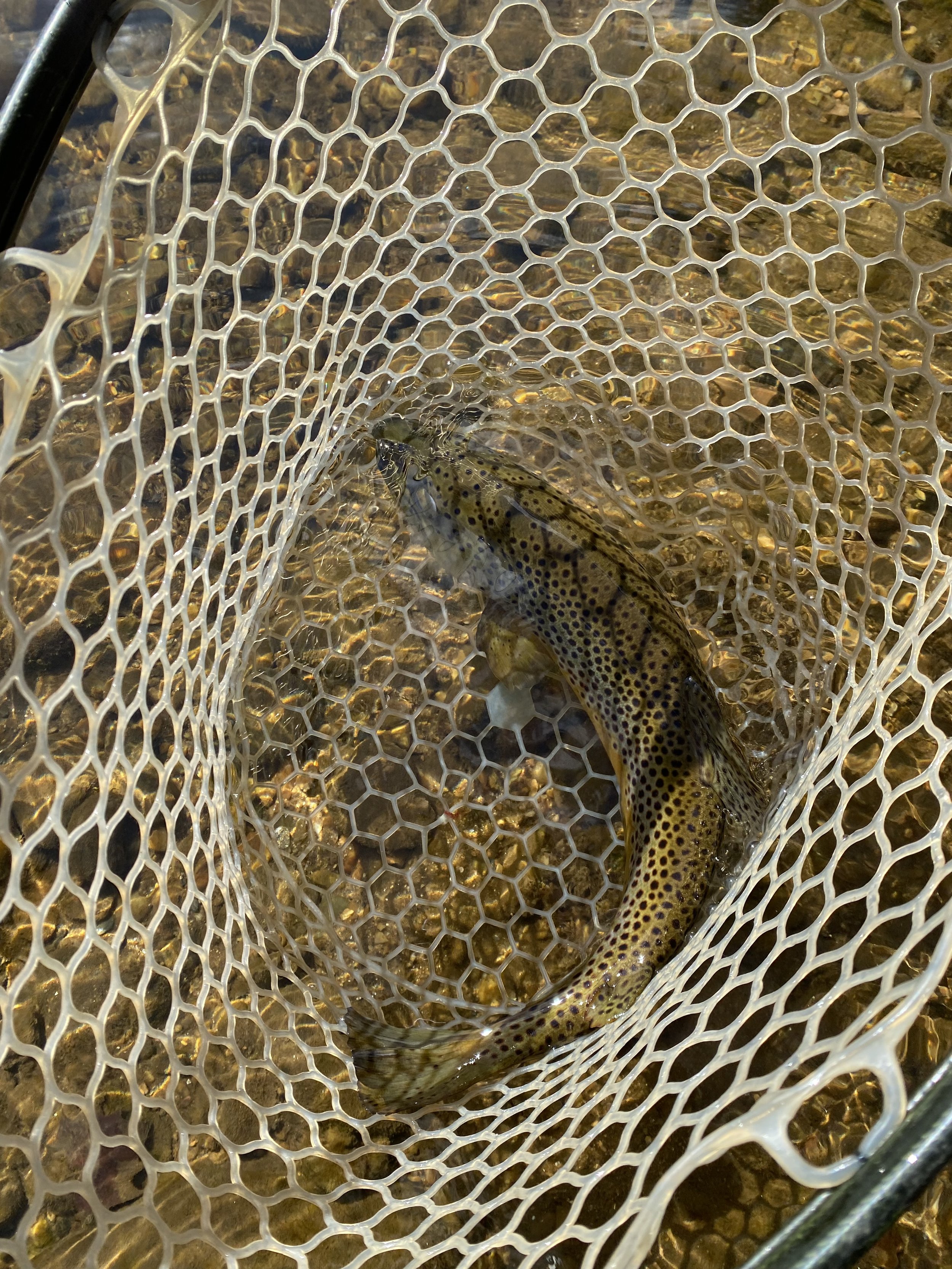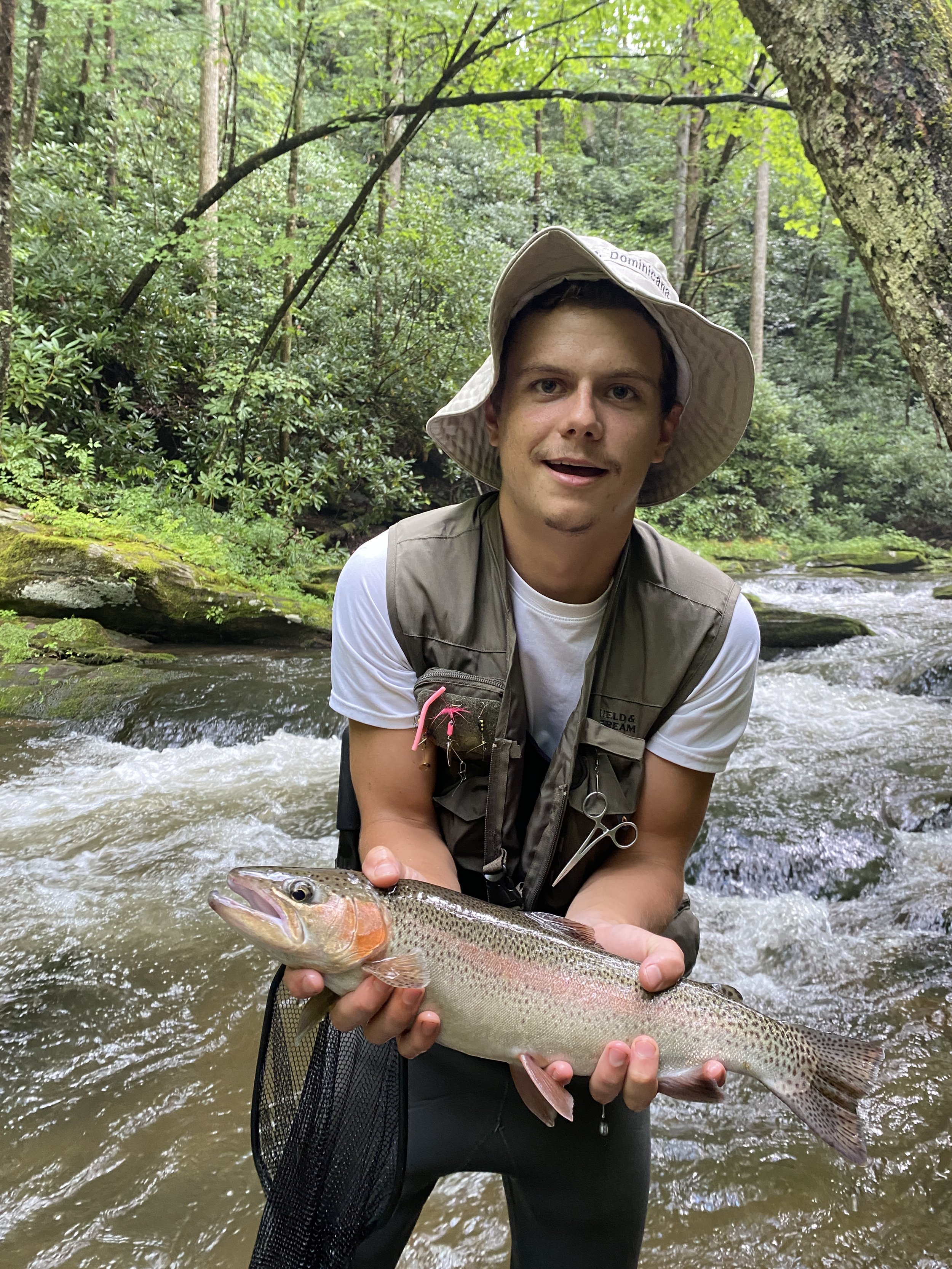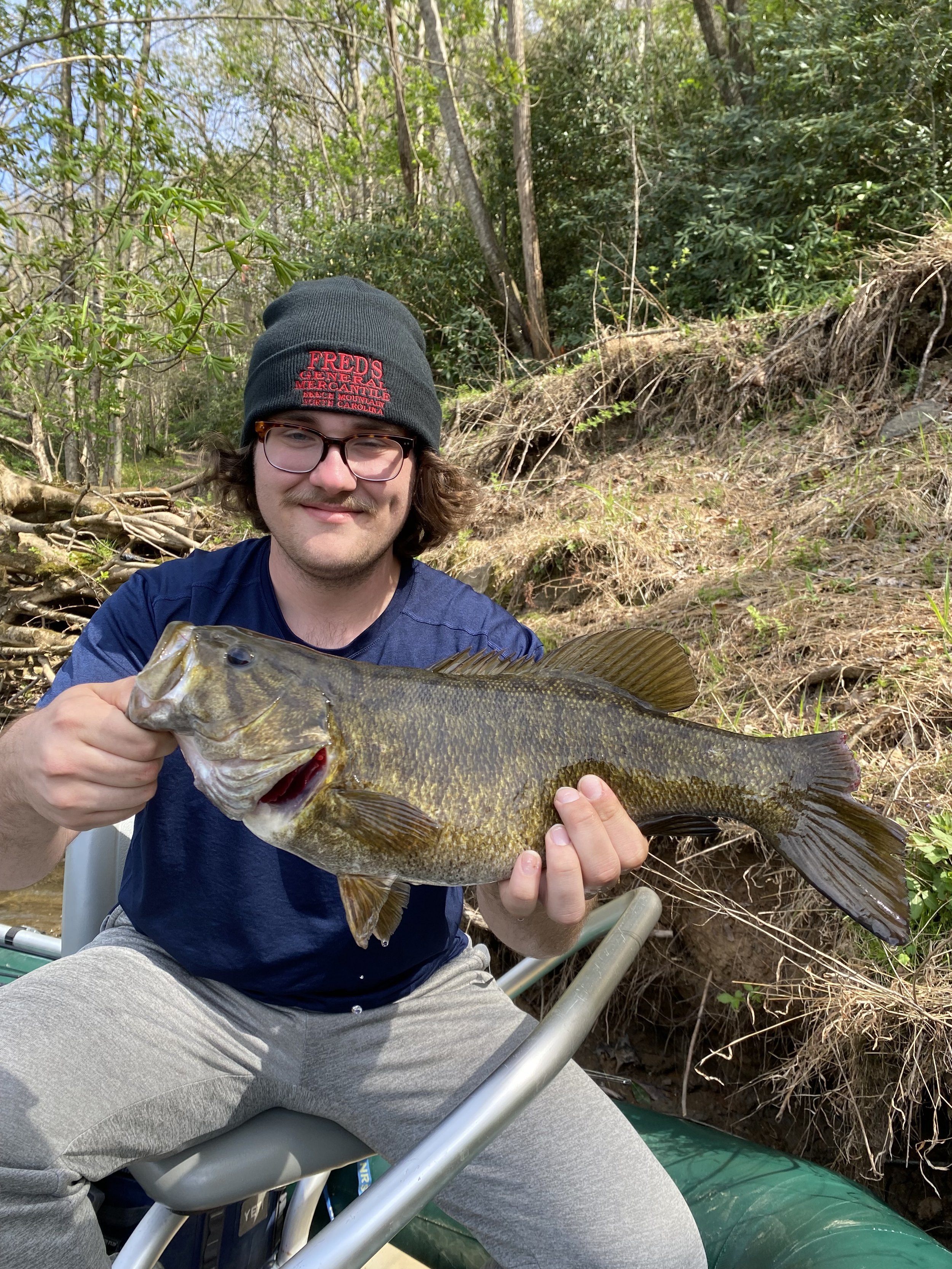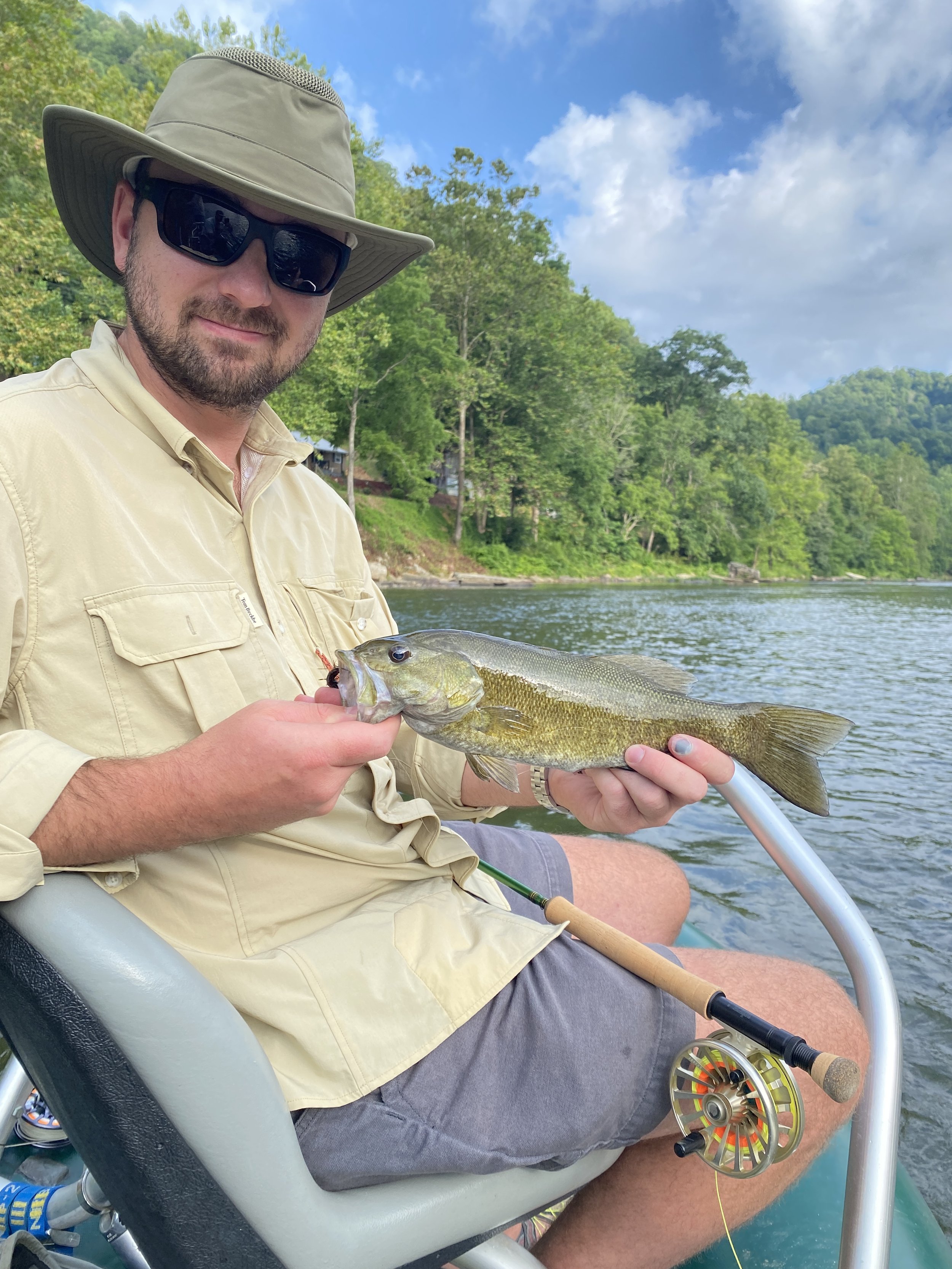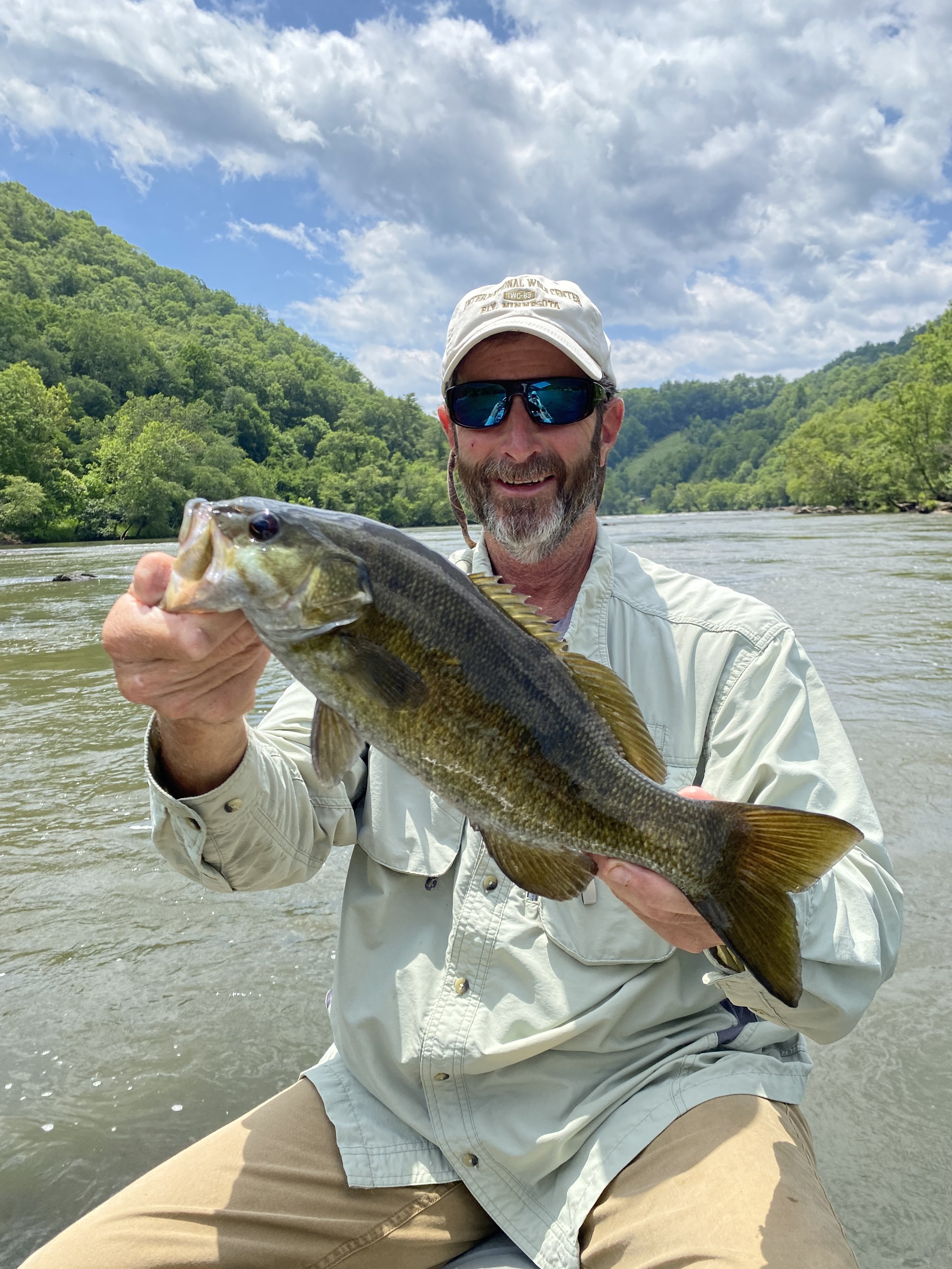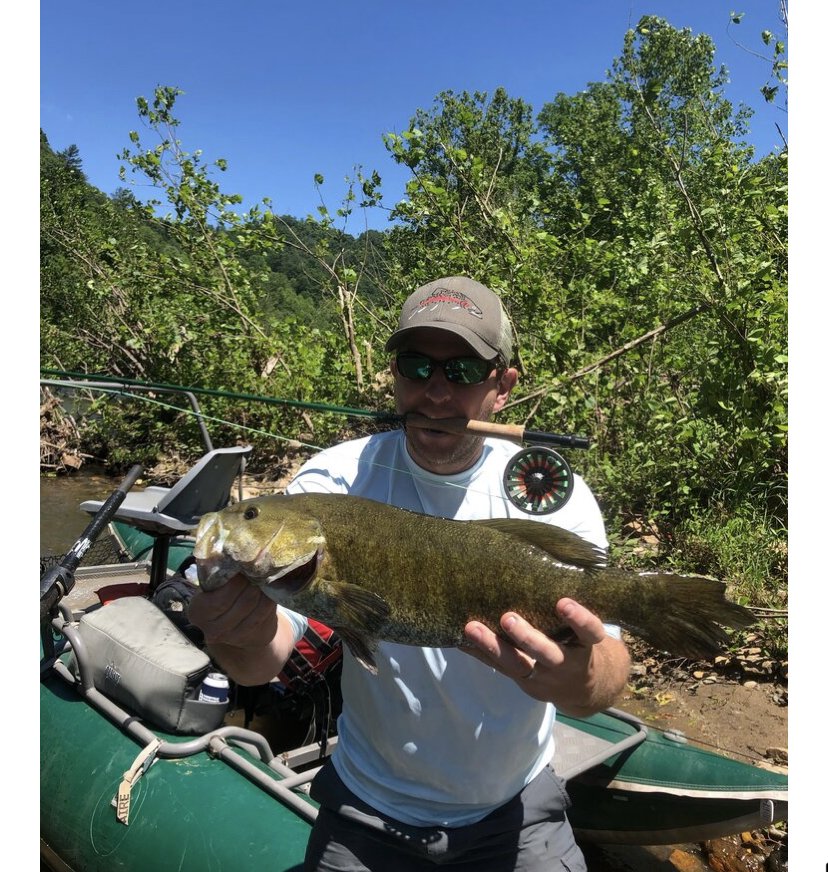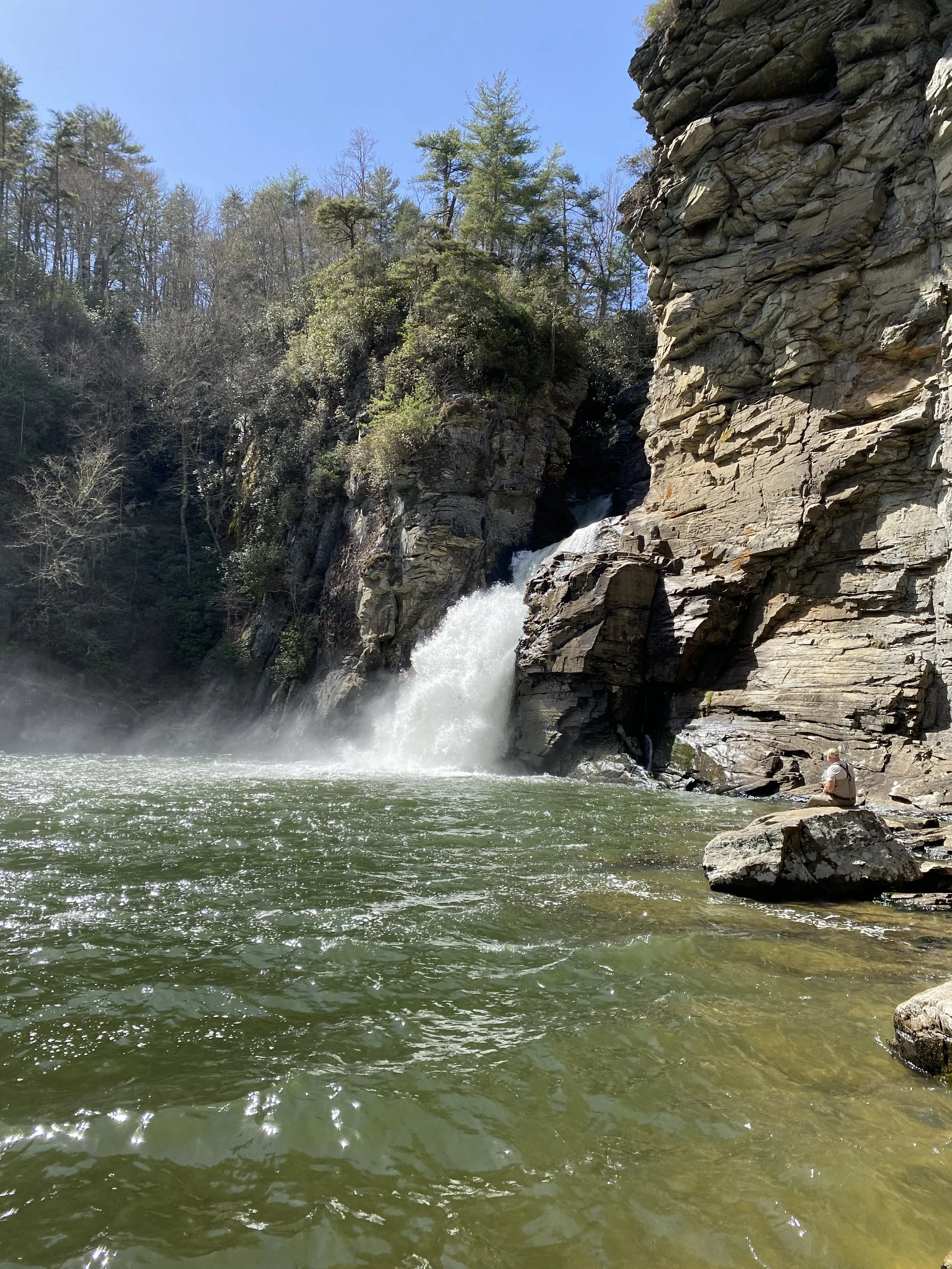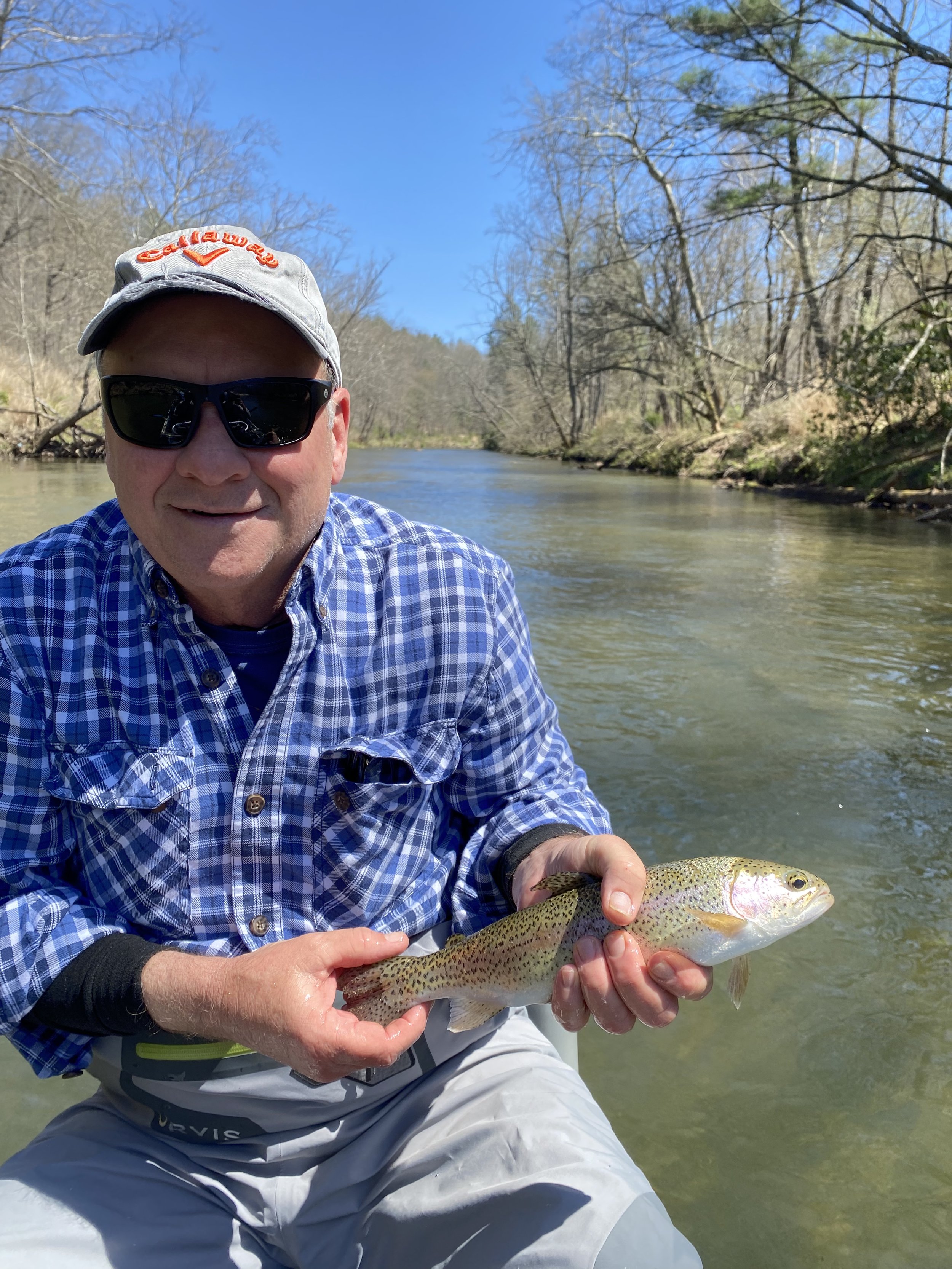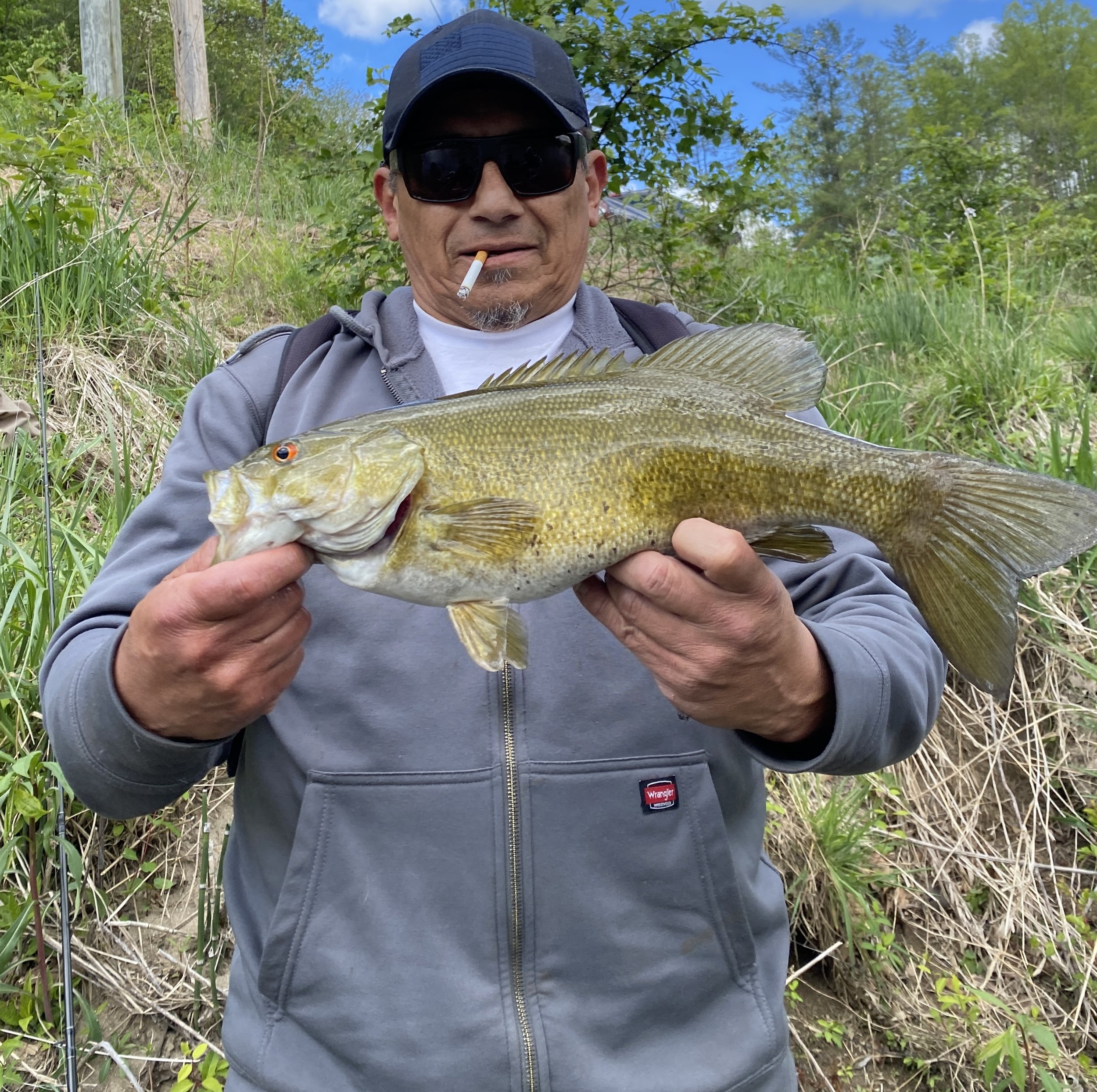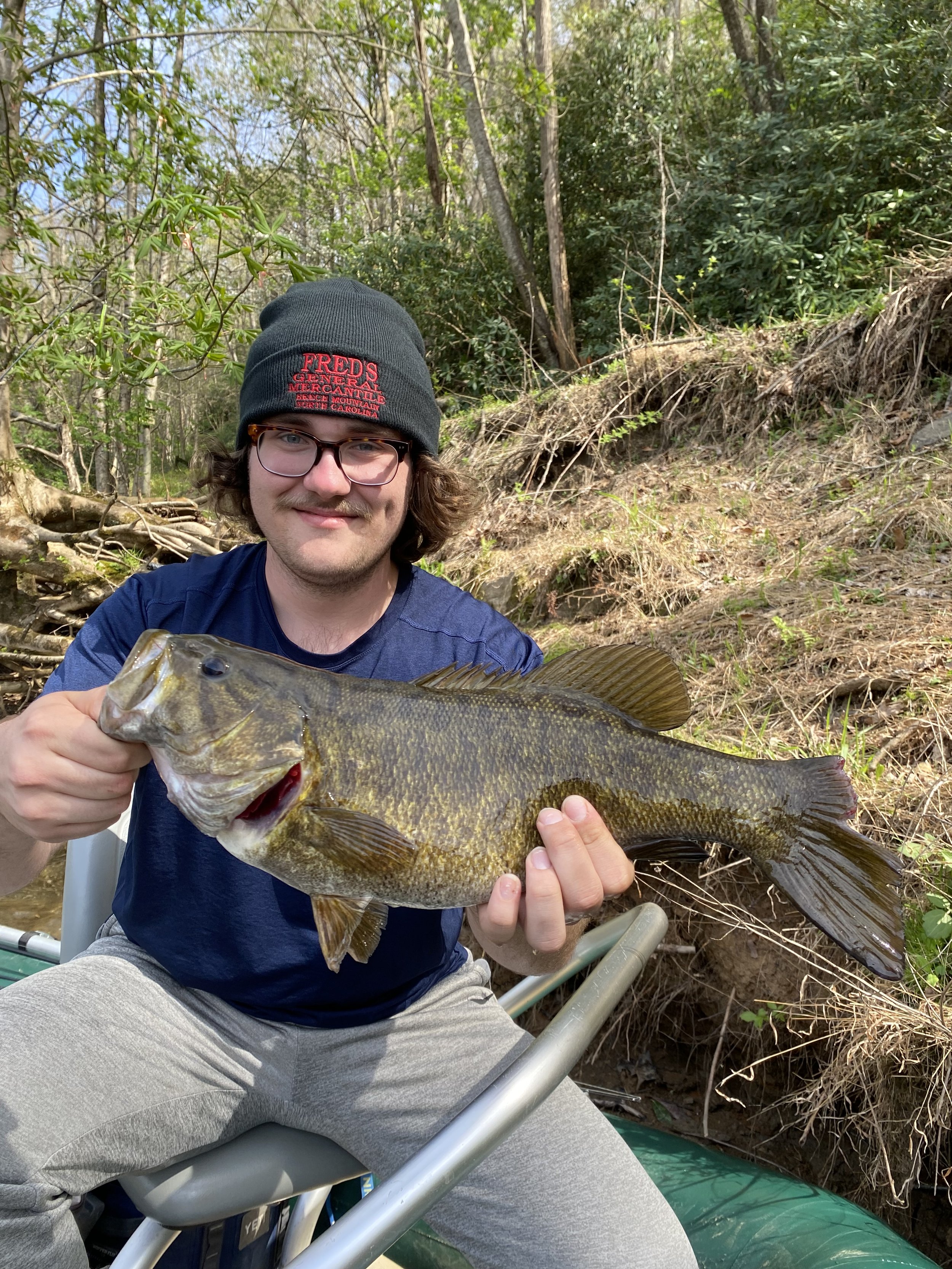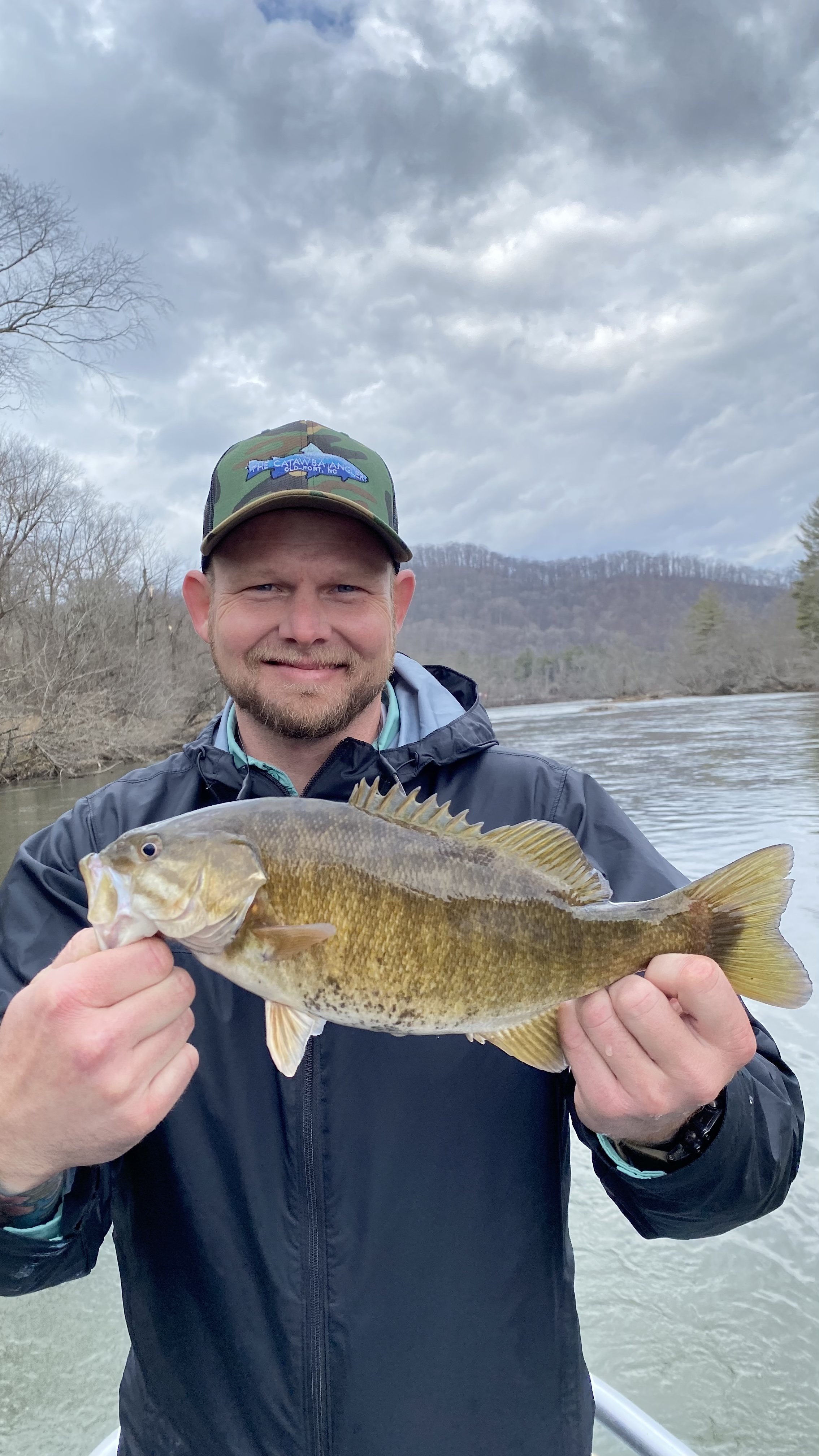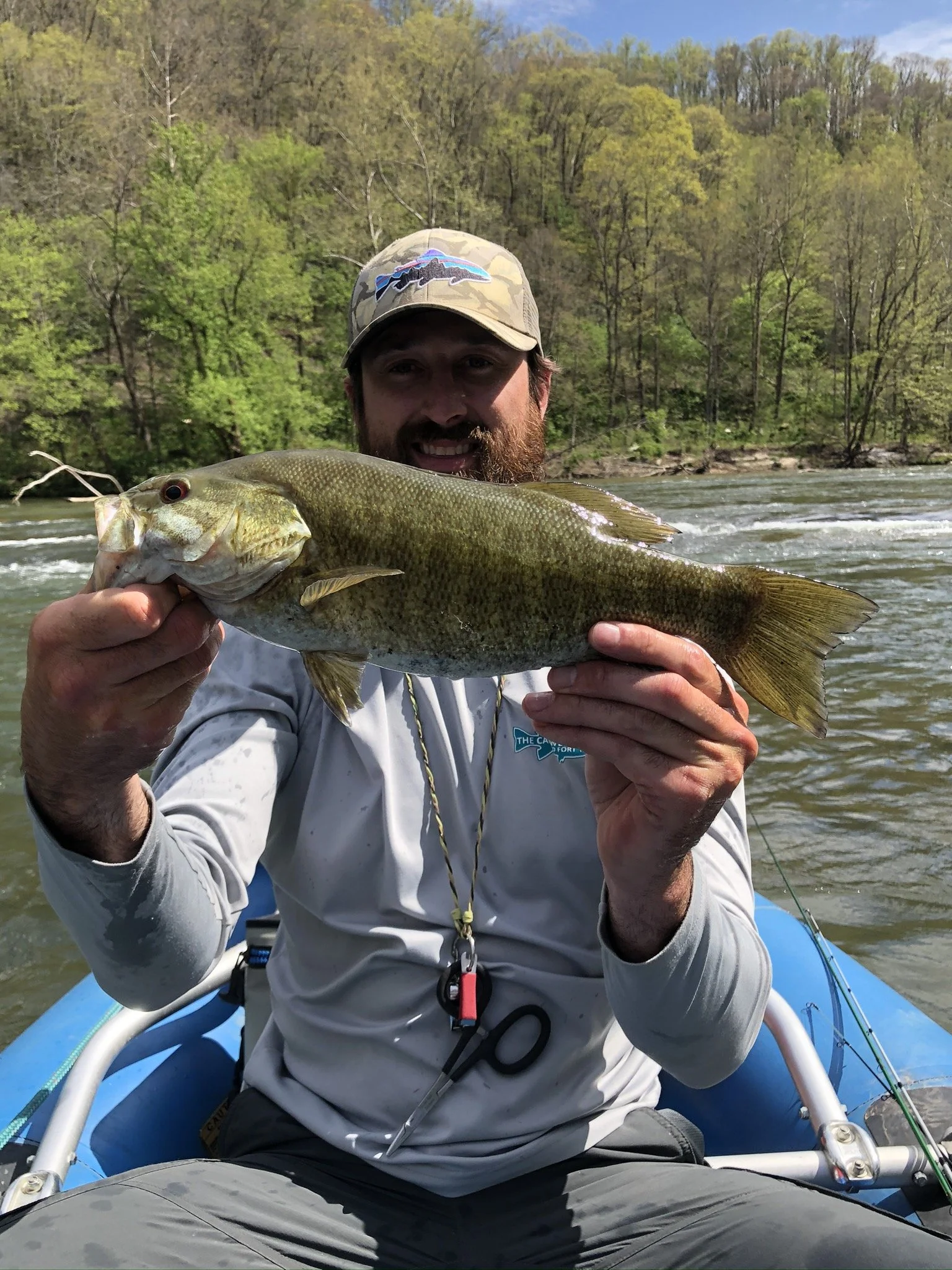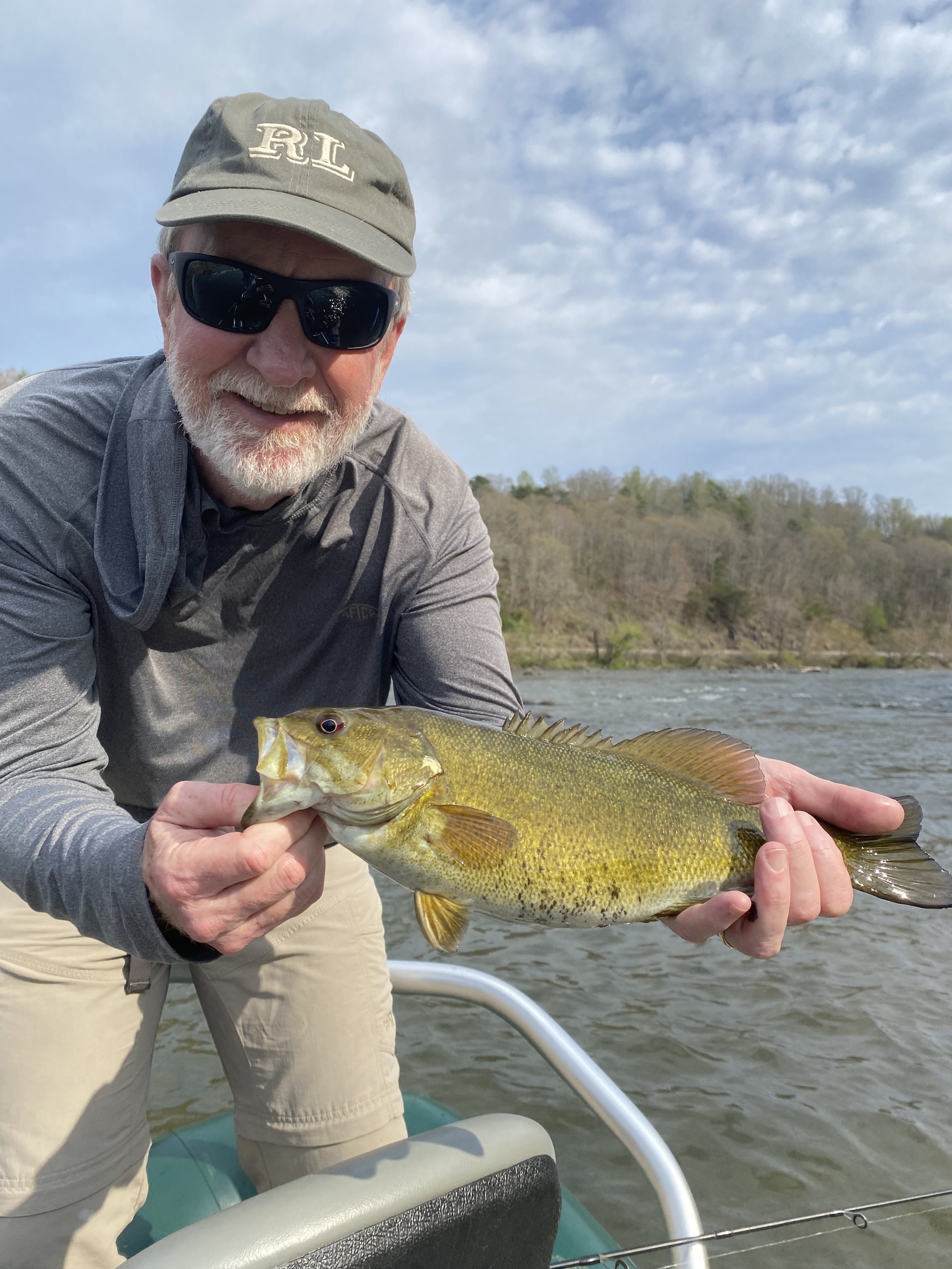Asheville Fishing Charters offer some of the best ways to enjoy your visit to Asheville, North Carolina.
There are ample opportunities to explore the productive smallmouth and trout rivers in Asheville by boat or foot.
The Catawba Angler is led by head guide Matt Evans who has spent his whole life fishing the smallmouth and trout streams in western North Carolina. It’s our mission as a company to provide the best fishing trip possible. We will do everything in our power to provide clients with an memorable fishing experience here in the mountains of North Carolina.
There is always something to catch here in North Carolina whether it be wild trout on a backcountry stream, stocked trout on a bigger freestone river, or smallmouth on the French Broad or Nolichucky rivers. We welcome first timers looking to learn the sport of fishing or experienced anglers looking for their personal best smallmouth or trout.
The Catawba Angler offers half day and full day trips. Half day trips are good for parents with younger kids or the angler who is limited on time. Full day trips are great for experienced anglers wanting to fish longer than the half day. There are multiple benefits to a full day trip such as more fishing time, covering more water, and a full day is only $100 more than the half day rate. Certain times of the year the fishing is more consistent which justifies a full day trip, but there are times where fishing is best certain hours of the day which in that case the half day trip would be best. Whatever guided fishing trip you decide we promise to make it an unforgettable time on the water.
We are fortunate to be able to run guide trips every month of the year here in Asheville. The best time to trout fish is October through the end of June. We do offer wild trout trips throughout July and August, but clients must be willing to go early in the morning and capable of fishing higher elevation trout streams where we can find cold water. Smallmouth fishing is great from March to November. Every month is different. Experienced anglers looking for bigger fish, the spring and fall months would be best. During this time we throw bigger baits and flies for the larger smallmouth. It’s not uncommon to catch 50 smallmouth on a full day trip during the summer, but every day is different. We’ve had 100 fish days when the stars align on the French Broad River. As a client enjoy the process of catching and not just numbers. You can trust your guide that is out there every day that they are working off knowledge that has been acquired over many years. I don’t know any guide that doesn’t want their clients to catch fish. I can assure you that myself and any other guide that works for The Catawba Angler has put in the leg work to give you the best fishing trip possible no matter the conditions. Our guides understand the seasonal patterns and weather conditions that affect fish behavior, which helps us fish more effectively.
There are days that can be more challenging than others and we will celebrate the small wins that day, but just know we will give you our very best day in and day out.
The Catawba Angler offers fly fishing and spin fishing trips for trout and smallmouth. Fly fishing for trout and spin fishing for smallmouth are the most effective ways to target the two species. We will spin fish for trout and we will fly fish for smallmouth. We are in the business of making the client happy and prepared to fish whatever way you are most confident in. If you want to fly fish for smallmouth our favorites times to do so is July/August/September. This time of year we throw topwater flies for the bigger smallmouth looking for an easy meal. Fly fishing is the best way to dead drift a cicada pattern against a shady bank targeting bigger fish. We only fly fish for the smaller wild trout. These smaller trout are willing to hit dry flies most months of the year. Fly fishing is ideal when presenting smaller flies.
The Catawba Angler is capable of handling large groups on guided fishing trips, but smaller group sizes is always ideal. Think about it. If you are the third boat of your group fishing behind two guide boats most likely your boat is not going to have as productive day as the two boats in front. We do our best as guides to leap frog each other for your parties sake, but someone is always going to get the short end of the stick. It’s best to keep your party to two anglers at a time. I understand people have bigger families especially ones with kids. If all the kids want to go we will gladly guide them on one of our family friendly fishing trips here in Asheville. We enjoy guiding the next generation as much as seasoned anglers.
It’s hard to read a website and get all your questions answered. If you are interested in booking a guided fishing trip we encourage you to email, call, or text us. You will be speaking directly with Matt Evans (Owner/Head Guide of The Catawba Angler). He will gladly answer all your questions and tell you what is fishing best that time of year.





















































